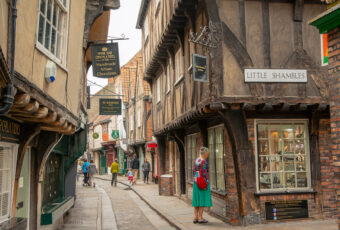Black Tiger Snakes
It’s almost become a meme at this point that Australia is filled to the brim with deadly, dangerous, and beautiful creatures. If you are afraid of nature’s horrors then you probably shouldn’t book a cheap flight and hotel reservation in the land down under. These beauties come in a variety of different sizes, shapes, and colors. We’ll highlight the Black Tiger Snake thanks to its ominous appearance and lethal dosage of venom. You can die from a bite within half of an hour of being bitten, but fatalities are more common in the 6- to 24-hour range. If you get bit by one of these crawlers you’ll feel tingling, sweating, and numbness and you MUST get to antivenin before it is too late. For the most part Tiger Snakes are scared enough of humans that they’ll slither away if you run into them, but when cornered they become aggressive and ready to strike.
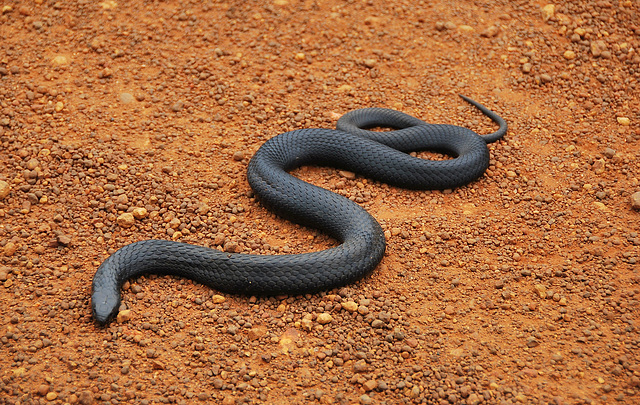
Black Tiger Snakes
Rattlesnake
Believe it or not but this is the only snake that makes our list from North America. The Rattlesnake is one of the most iconic snakes in the world thanks to its appearance in pop culture along with the signature rattling tail. The Rattlesnake is technically part of the Pit Viper genus, but they seem to stand out all on their own. Rattlesnakes most commonly hunt birds and snakes, but they are capable of biting and killing just about anything thanks to the toxicity of their venom. They are capable of striking at a distance equivalent to a full two-thirds of their body. Despite the ominous sound of their rattling, which signifies a readiness to strike, Rattlesnakes would prefer not to have to deal with humans and they tend to flee unless cornered. Fortunately for us, Rattlesnake bites are rarely fatal to humans when treated with promptness.
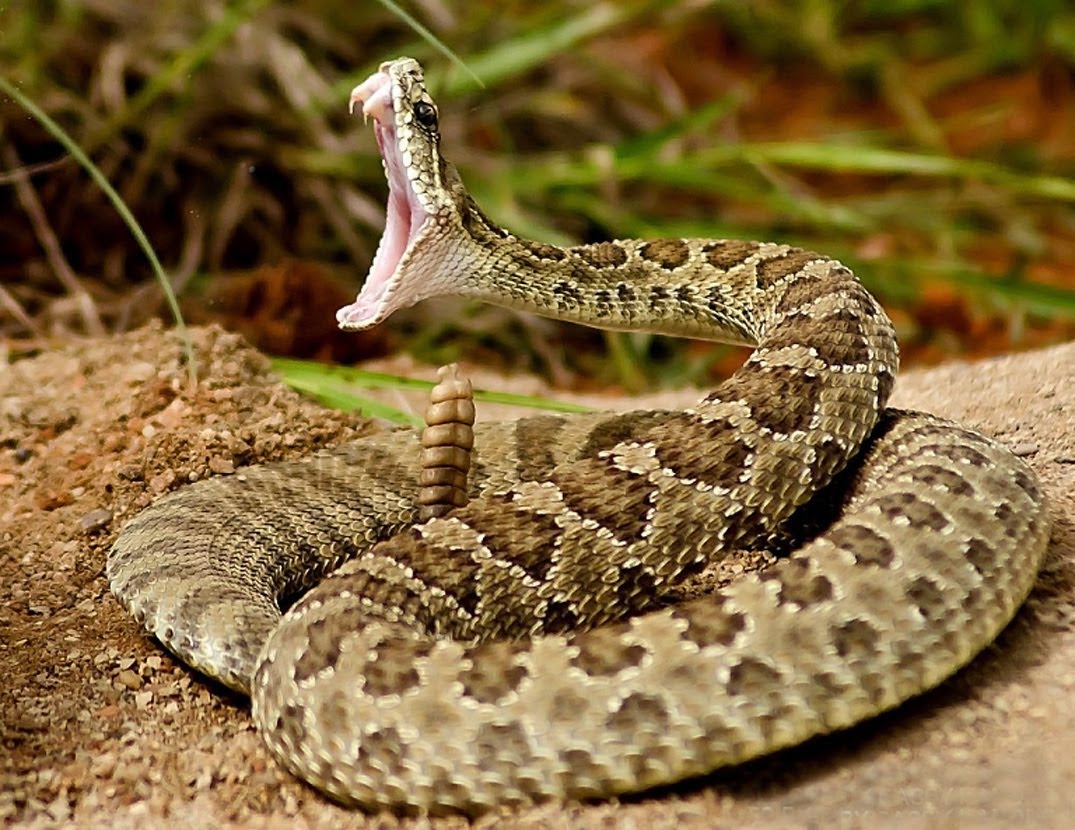
Rattlesnake
Death Adder
The Death Adder hails from, no surprise, Australia, New Guinea, and a few islands nearby. Considered an entire genus of snake, but all are also considered to be deadly thanks to the fact that they are among the most venomous of all the snakes in the world. The Death Adder is special in that it is not considered an active hunter. Rather, the Death Adder will lay in wait as it patiently hopes for prey to come across its path. Once that prey appears in front of the Death Adder then ambush and death is imminent. A bite from a Death Adder will start out feeling like simple minor discomfort and then it will lead to paralysis and finally respiratory failure within six hours. Death is usually a result of untreated bites in the 24-48 hour range. However, antivenin has been developed to be exceedingly capable of stopping the poison so a complete healing is possible. You should know that the Death Adder is the fastest striking snake in the world. We’d just avoid ’em all together. Spare the cheap ticket and hotel reservations to New Guinea and opt for something on the mainland.
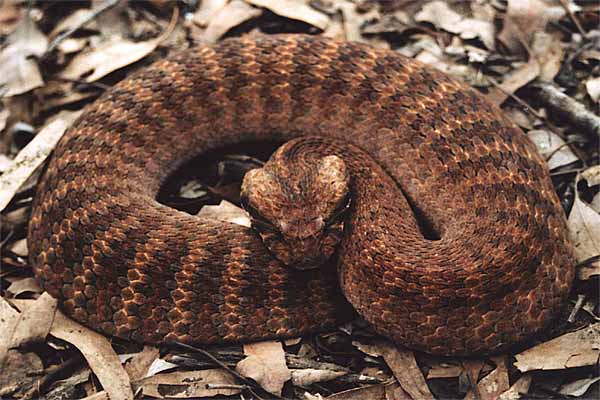
Death Adder
King Cobra
Any creature that is crowned definitely deserves a spot on our list. The King Cobra is found throughout Asia, but it can also be picked up in the jungles of India. One of the most famous snakes here due to the fact that it is the longest venomous snake in the world. The King Cobra can grow up to 18.8 feet and it is unique in its classification but is not a “true cobra”. Instead it is the only member of its sub genus. Though the King Cobra is deadly to humans it is primarily known for hunting other snakes, lizards, and rodents. The King Cobra has enough neurotoxin in its venom to paralyze and kill an entire elephant over the span of a few hours. Without treatment the survival rate of a King Cobra bite for humans is roughly 40 percent.
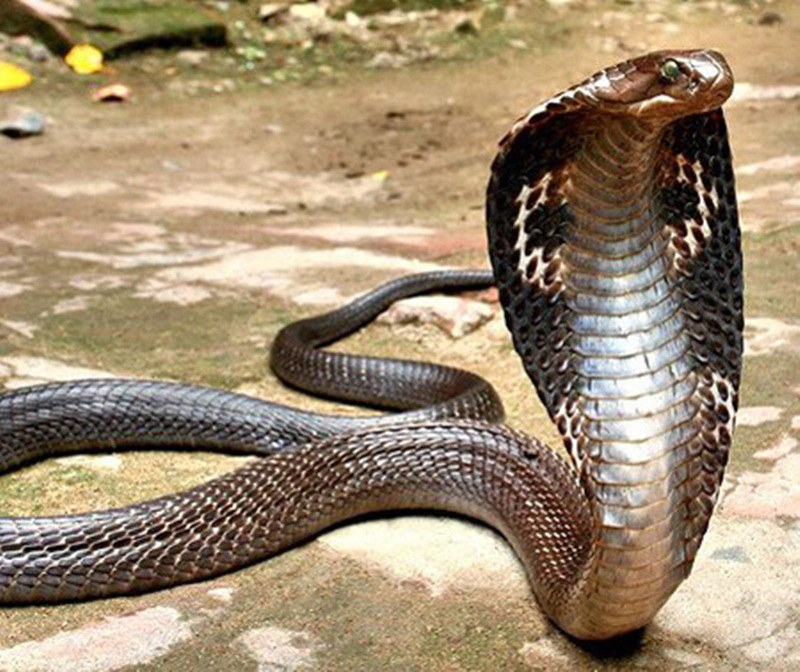
King Cobra
Russell’s Viper
Next up on our list is the Russell’s Viper. There is only one species in the entire genus and it can be found all throughout Asia, focusing primarily on Southeast Asia. The snake was named after a herpetologist named Patrick Russell. Russell’s Snake, also known as the Daboia, is considered one of India’s ‘Big Four’. It is considered one of the deadliest snakes on the entire planet thanks to its aggressive nature and location in highly populated areas. We can’t verify this firsthand, but studies have shown that the Russell’s viper is also one of the loudest snakes, in terms of their hiss, on the entire planet. Daboia focus primarily on hunting small rodents, birds, lizards, and even scorpions. Young Daboia are also cannibalistic, something rare of the spider family.
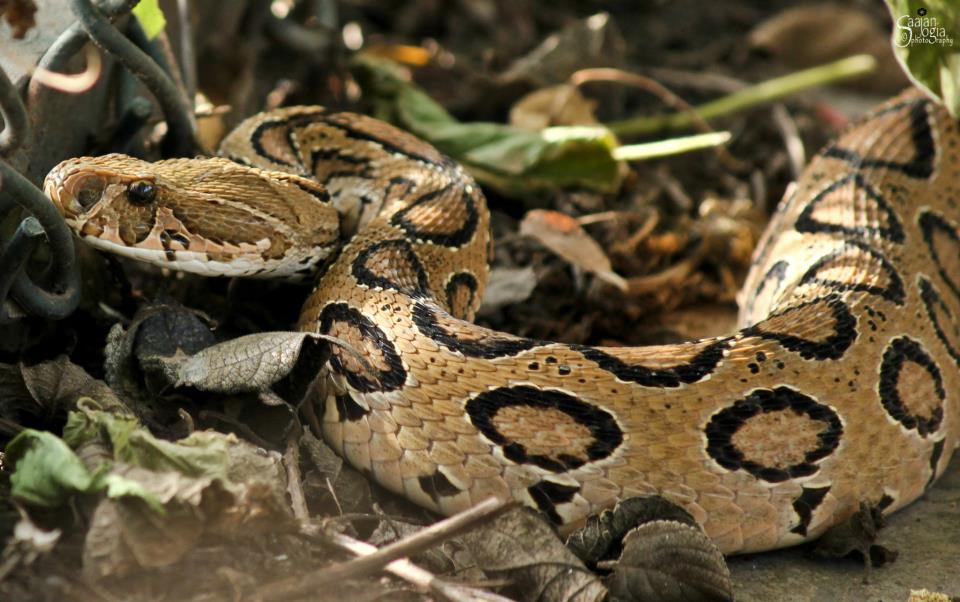
Russell’s Viper
Indian Cobra
The Indian Cobra is the next member of India’s ‘Big Four’ and one of the most deadly. They make up the majority of all snakebites toward humans in the country of India. The Indian Cobra has great stature in the country thanks to their placement in Indian mythos and culture and they are often seen being used by ‘snake charmers’. This close proximity to Indian residents is likely what leads the snake to continually rank among the worlds most active biting snakes. Getting bit by an Indian Cobra is not pleasant, to say the least. You’ll feel paralyzing movements in your nerves, which will lead to respiratory failure or a heart attack. Despite the fact that the Indian Cobra is so deadly, many people flock and voluntarily get bit by juveniles of this species due to the euphoria and sedation that follows the bite.
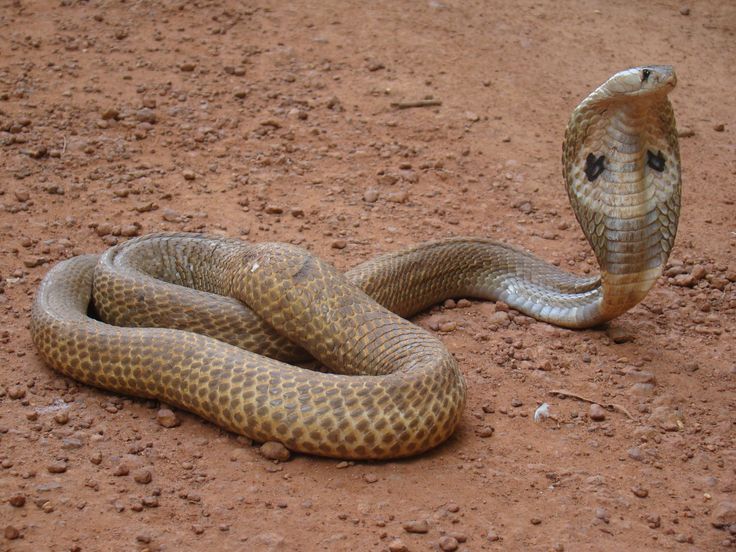
Indian Cobra
Saw Scaled Viper
Right now the Middle East is a violent place for a number of reasons and it seems like the Saw Scaled Viper is just getting in on the action. Particularly found in India, China, and Asia these vipers are nocturnal, mean, and they are very, very, fast. The Saw Scaled Viper will bring pain immediately upon their bite and it will quickly lead to swelling and then bleeding from your mouth. Your blood pressure will plummet, your heart rare will slow, and you’ll likely be in pain for the next four or five weeks. Without treatment you could be dead within a day, or suffer for two weeks before finally tapping out.
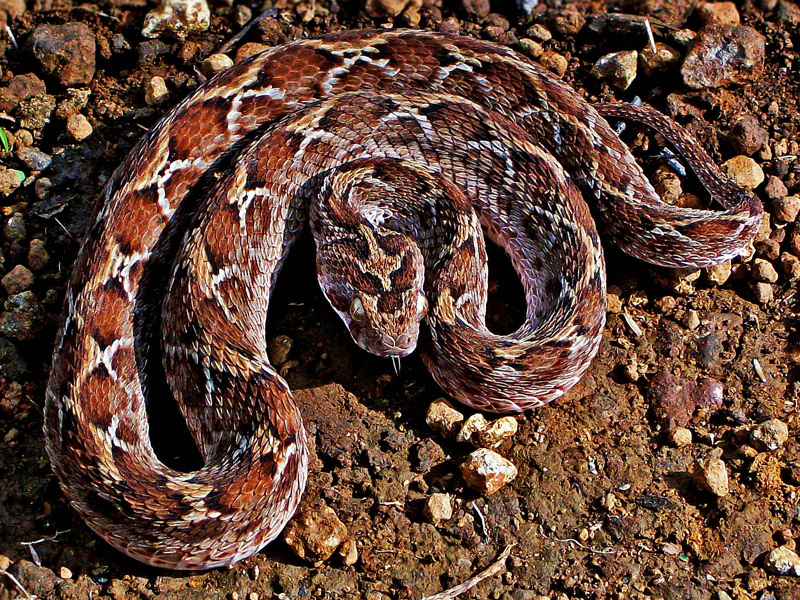
Saw Scaled Viper
Common Krait
The next member of India’s ‘Big Four’, and one of the most dangerous snakes on the planet, is the Common Krait. These snakes grow anywhere from three to five feet in length and they have a very flat head with almost no neck to show. The Common Krait changes in its ferocity depending on when you stumble across them. During the day the snake will hide and when found reacts rather slow. At night, however, the Common Krait will bite at the first sign of annoyance while becoming agitated much more quickly. Nerve damage, muscle paralysis, and brain damage can result from an untreated Krait bite.
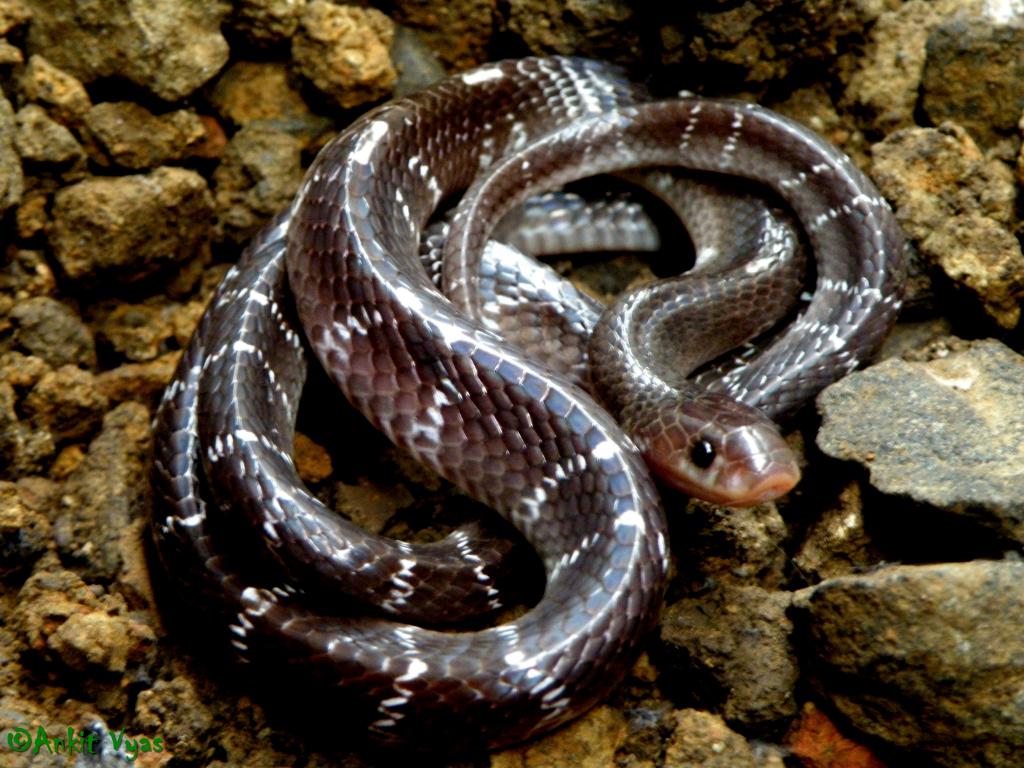
Common Krait
Inland Taipan
The Inland Taipan is officially the deadliest snake on this list in terms of pure venom. The mixture of taipoxin and neurotoxin leads to paralysis, blood hemorrhaging, limited breathing ability, and intense muscle damage. Fortunately this snake is rare due to its relegation to inland Australia, but you still wouldn’t want to stumble across one. The only saving grace from our eventual snake takeover is the fact that the Inland Taipan is both reclusive and shy, opting to flee instead of attack in most cases. However, if one does opt to attack you will likely be dead within 30 to 45 minutes, unless treated almost immediately.
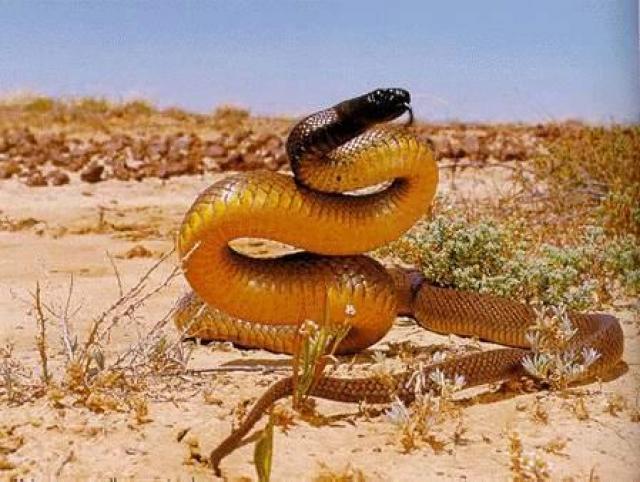
Inland Taipan
Black Mamba
The Black Mamba has brought death to countless people all over the continent of Africa. Not shockingly, the ferocity of its striking ability and the density of its toxicity makes it crazy dangeorus. They are able to strike up to 12 times in succession and each bite will deliver massive amounts of neurotoxin. Black Mamba’s can pump enough venom into you with a single bite that you would be dead up to 25 times over. Untreated, Black Mamba bites are almost 100 percent deadly — many times occurring in as little time as 15 minutes.
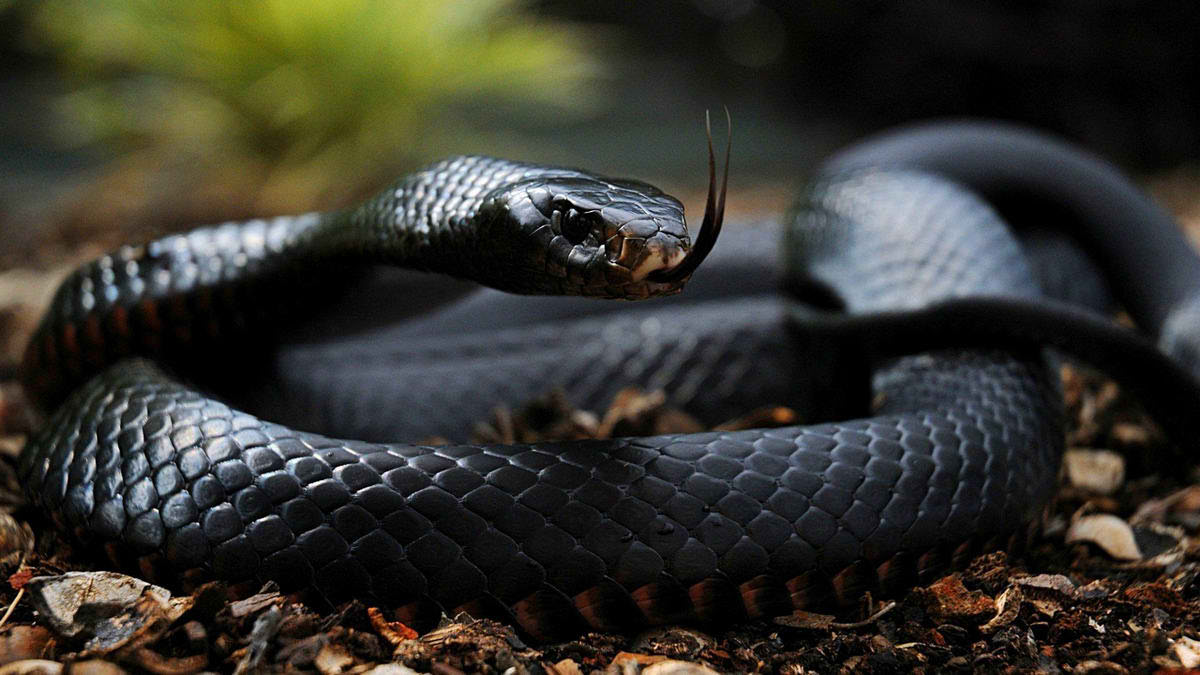
Black Mamba
Atheris Hispida
The Atheris Hispida is one of the most unique looking snakes on this list and that’s largely due to its location throughout the rainforests of Central Africa. This snake is a highly venemos snake with huge eyes, bristled scales, and retractable claws. The biggest danger is that there is no known antivenin currently being produced.
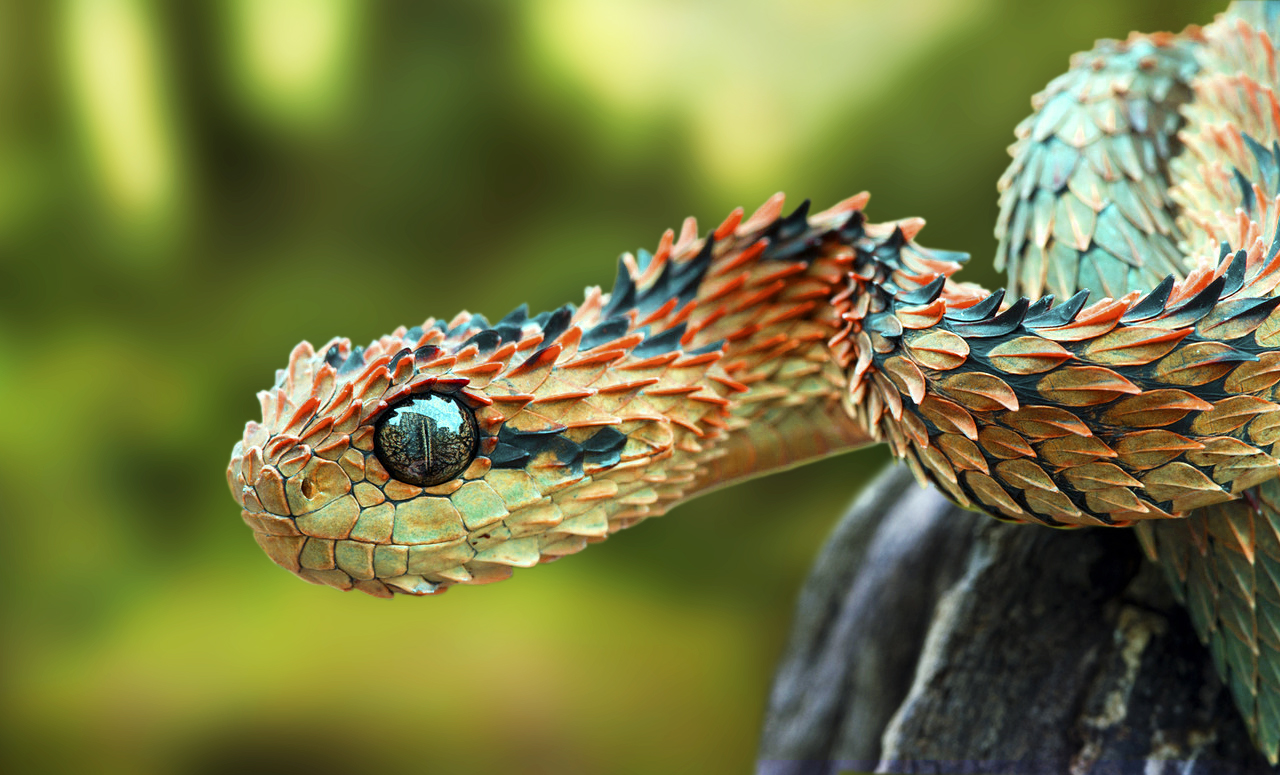
Atheris Hispida
Desert Horned Viper
Eek, the Desert Horned Viper is up next on our list. This large snake is the very image of evil in pop culture. It is long, light brown with patterned dark spots, and sporting horns above its eyes. They move sideways across sand and you can find it all throughout the Middle East and northern parts of Africa. Did we mention, that they’re hugely toxic thanks to its potent venom and you would do well to avoid being caught in ones path.
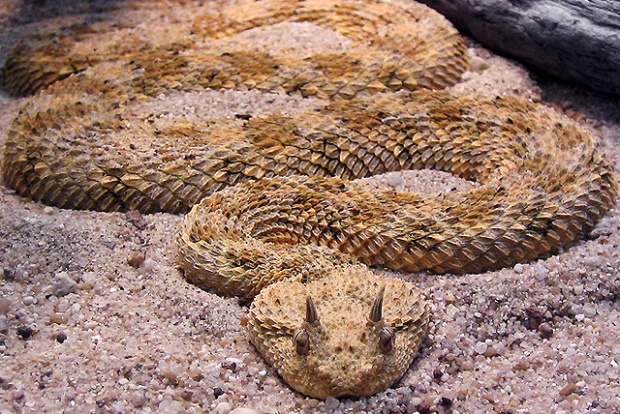
Desert Horned Viper
Philippine Cobra
Some snakes will stun you into submission by the very act of raising their bodies, and the Philippine Cobra uses that fear inspiring look to its benefit. This is the most venomous and deadliest snake in the entire Cobra species and it can spit its venom up to 10 feet in distance! Remember those dinosaurs that spat venom into the scientist’s eyes in Jurassic Park? Don’t let that be you! The venom in the Philippine Cobra immediately alters the way your nerves work, affecting both your cardiac and respiratory systems within minutes.
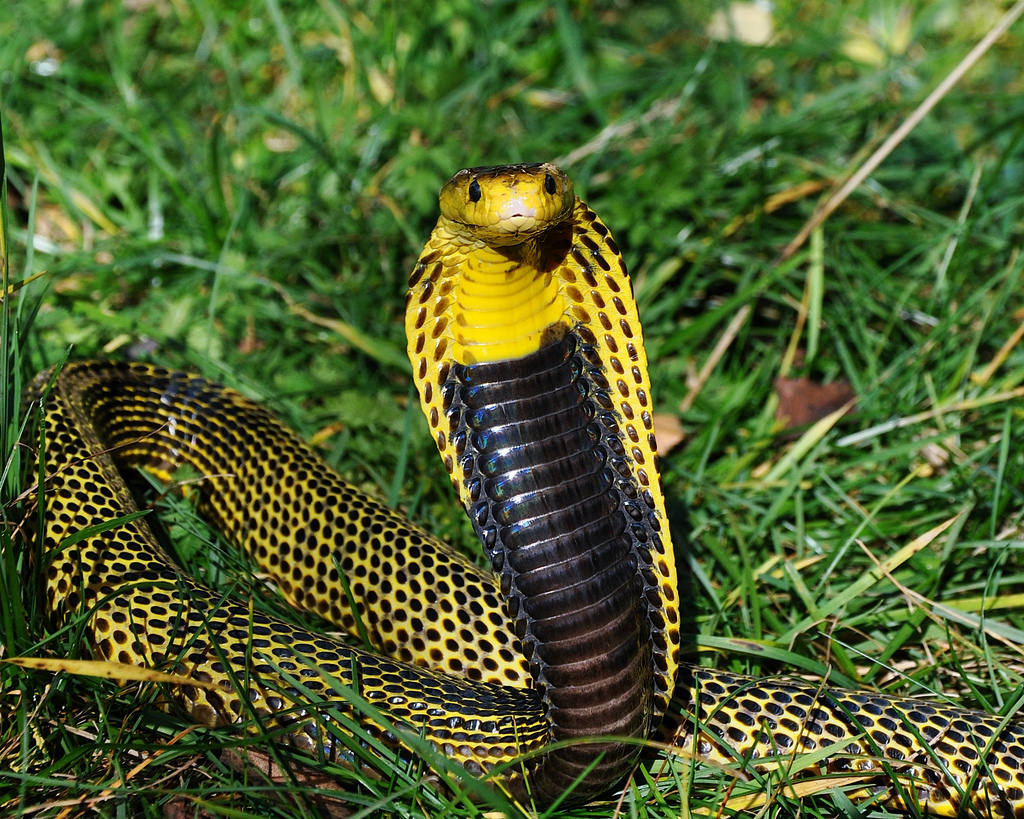
Philippine Cobra
Elephant Trunk Snake
Oh yeah, the Elephant Trunk Snake is almost more intimidating than it is dangerous. This snake can be found throughout Indonesia in the waters of that country. The reason that the Elephant Trunk Snake gets its name is twofold: first off it has the wrinkly, sagging skin of an elephant and second it can grow up to 10 feet in length, big enough to wrap a man and pull him underwater if he were caught unaware. It also typically doesn’t attack humans but it doesn’t mean that it can’t kill one.
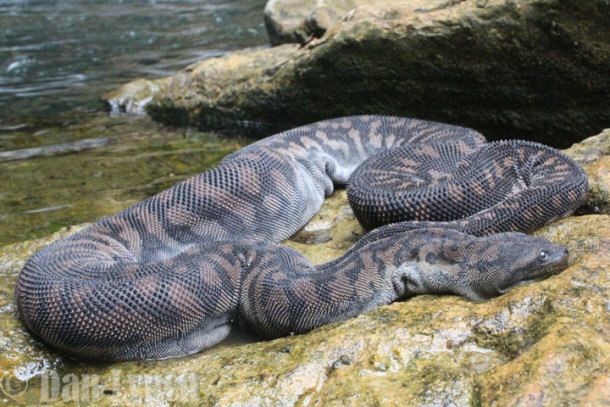
Elephant Trunk Snake
Anaconda
If you came into this list after watching the horror film Anaconda then you should know that we have not missed out on your snake. The Anaconda is an almost unrealistically large snake that is big enough to swallow a human whole. Despite the lack of venom you will still find that the Anaconda is extraordinarily dangerous due to its size. This snake likes to wrap victims around the midsection and compress them until they are crushed or completely suffocated. From that point on the Anaconda begins the long task of swallowing you. Yep, we’ll pass on wrestling with one of these.
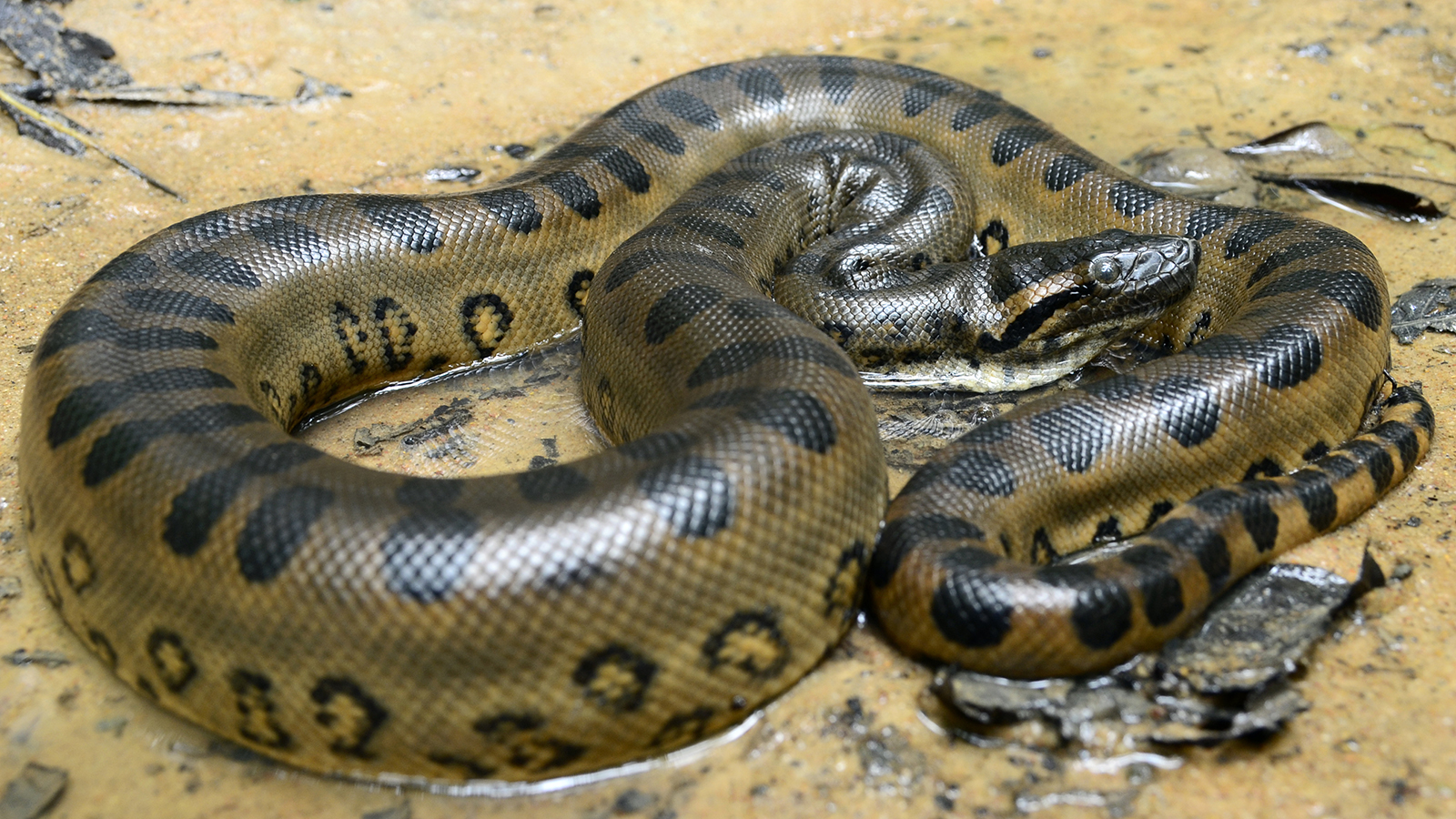
Anaconda
Boomslang
From giant and fat to large and agile, the Boomslang is a snake that many folks don’t realize that they need to fear, however they are truly a threat. The Boomslang has killed people around the word but mostly in South Africa where it is from. These snakes are fast, can climb trees, and has a deadly bite that is filled with venomous toxins. Herpetologist Karl P. Schmidt was bitten by a juvenile Boomslang and he died 24 hours later from brain hemorrhaging — he had not sought medical help believing that such a small snake could not impart that much venom. He was wrong.
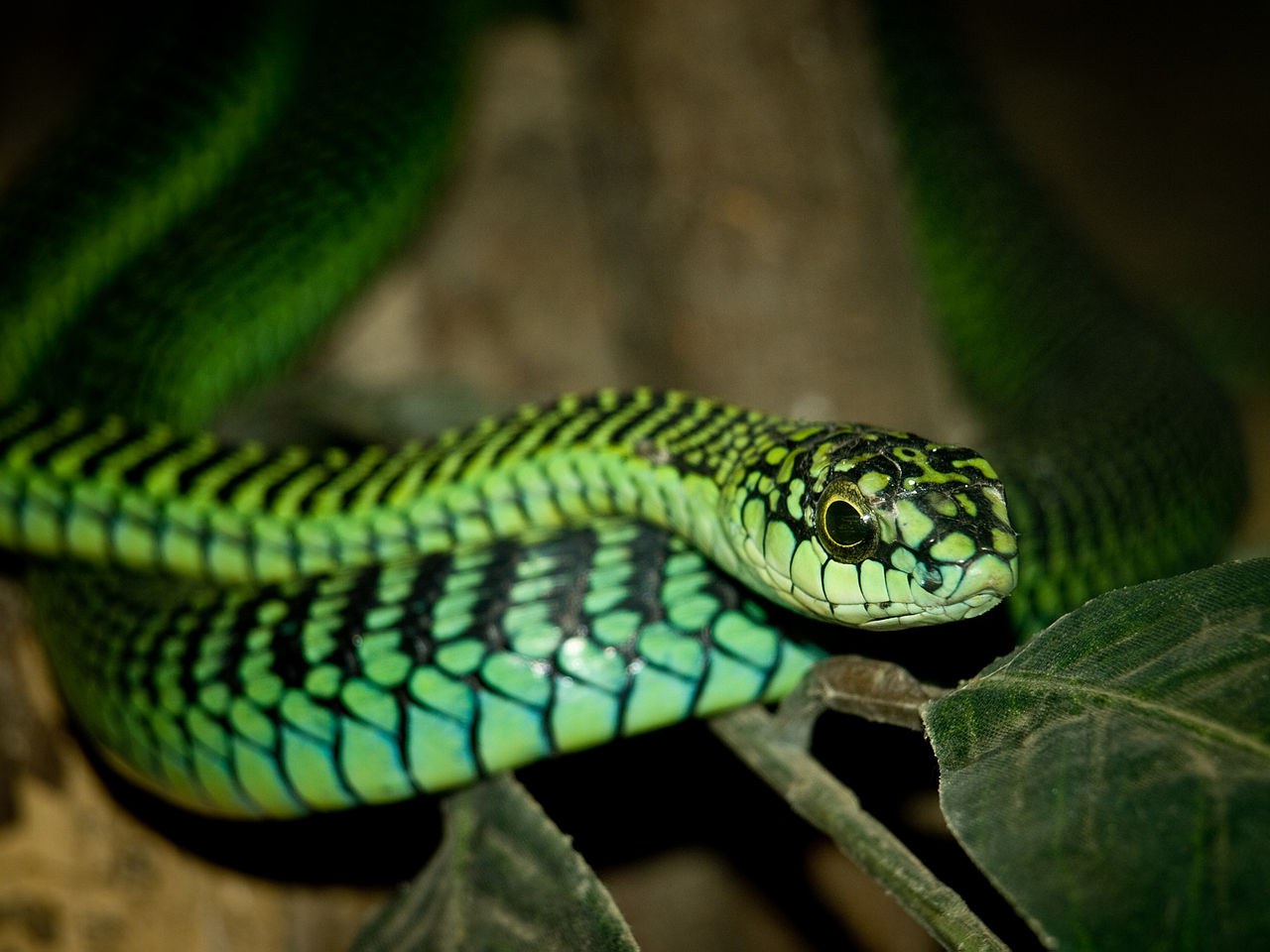
Boomslang
Malayan Snake
Also known as the Blue Krait, is found throughout Southeast Asia as well as Indonesia. Half of the Malayan’s bites end up being fatal even if medical professionals activate the proper antivenin. The Malayan is a terrifying creature that hunts other snakes and animals. The Malayan has a venom that is 16 times more toxic than the Cobra, which we had listed above. Despite their fear inducing fatality rate, the Malayan Snake isn’t typically aggressive around humans as it would prefer to flee and hide.
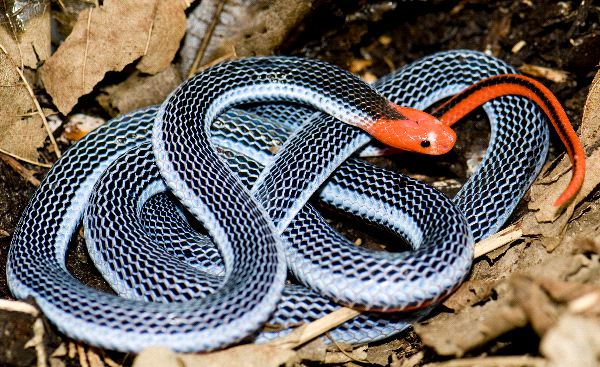
Malayan Snake
Eastern Brown Snake
Ahem, the Eastern Brown Snake may sound generic but it is potent enough to make even the most avid snake fan go pale in the face. Just a fraction of the Eastern Brown Snakes venom is enough to kill any adult human being. This is one of the most venomous species of snake on the planet with even juveniles being capable of killing full grown humans. Researchers advise to stay still if you run into one in nature.
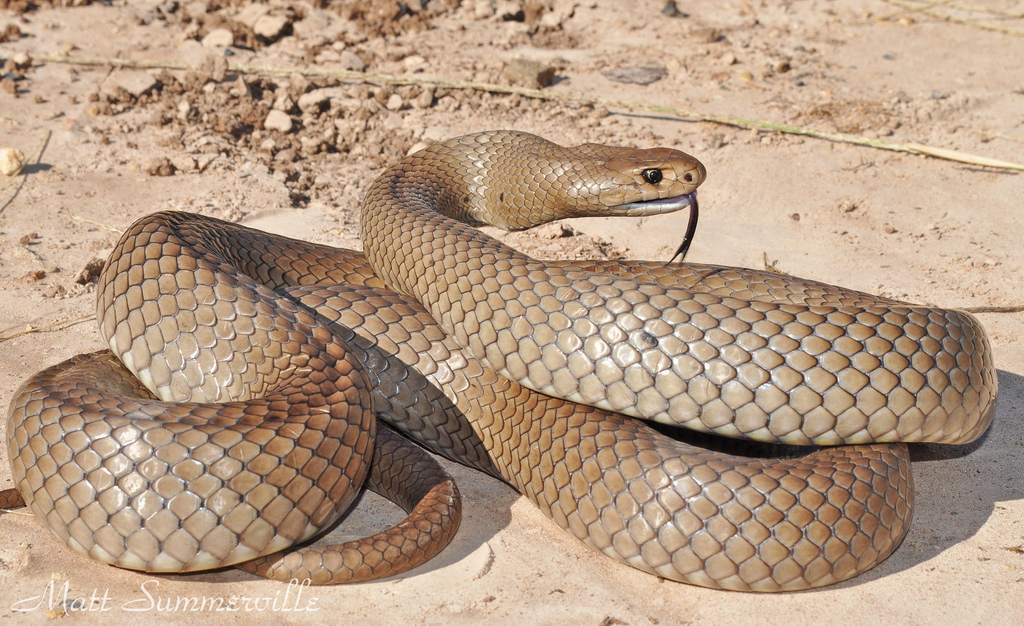
Eastern Brown Snake
Belcher’s Sea Snake
This is one snake that you do not want to swim near in the water. Despite its thin body and short length, just over 3 feet at largest, Belcher’s Sea Snake is one of the deadliest creatures on the planet. Belcher’s Sea Snake is so potent that even just a milligram of the snake’s venom could kill thousands of adult human beings. The only reason that this snake doesn’t rank higher on our list is that you have to go into the ocean to be bit by one, and even then the odds are rare that you find one.
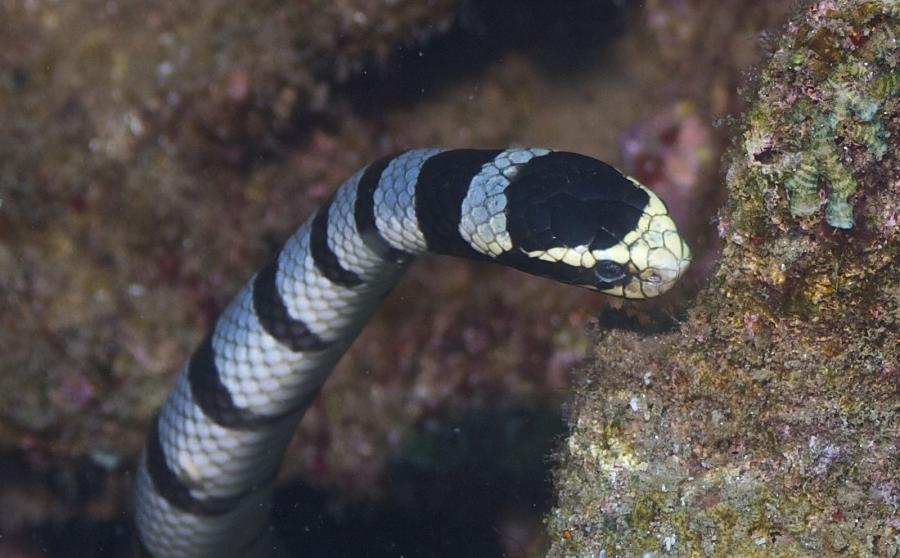
Belcher’s Sea Snake
Horned Viper
We talked about the Desert Horned Viper above but now we are going to talk about the more generic species, the Horned Viper. You can run into Horned Vipers throughout Africa and the Middle east with the majority of them being rather small. Let it be known that you will definitely know you are about to step on an angry Horned Viper when you hear their scales rubbing together to produce an odd sound. Nobody knows why these snakes have horns on their head.
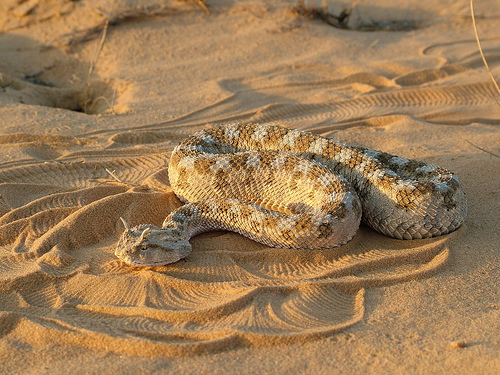
Horned Viper
Alcatrazes Lancehead
Otherwise known as the Bothrops Alcatraz, the Alcatrazes Lancehead is a dangerous snake from the coast of Brazil. This snake is enormously rare, with only a precious few left alive, but this might assuage some Brazilian citizens. And yes, the Alcatrazes Lancehead is as dangerous as its name suggests.
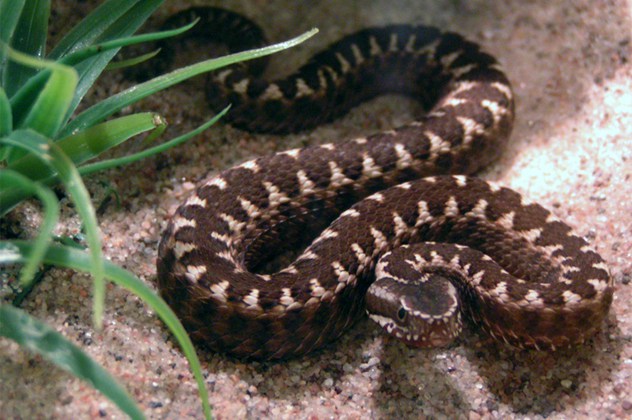
Alcatrazes Lancehead
Tiger Keelback
Tiger Keelback snakes are a water snake from Japan but it can be found throughout Eastern Asia. These snakes only grow to around 3 feet in length and it is very shy, which has led many people to presume that it is harmless — this is not the case. They also have the ability to consume toxic creatures, store it in their own glands, before releasing it at a later time as an extra attack.
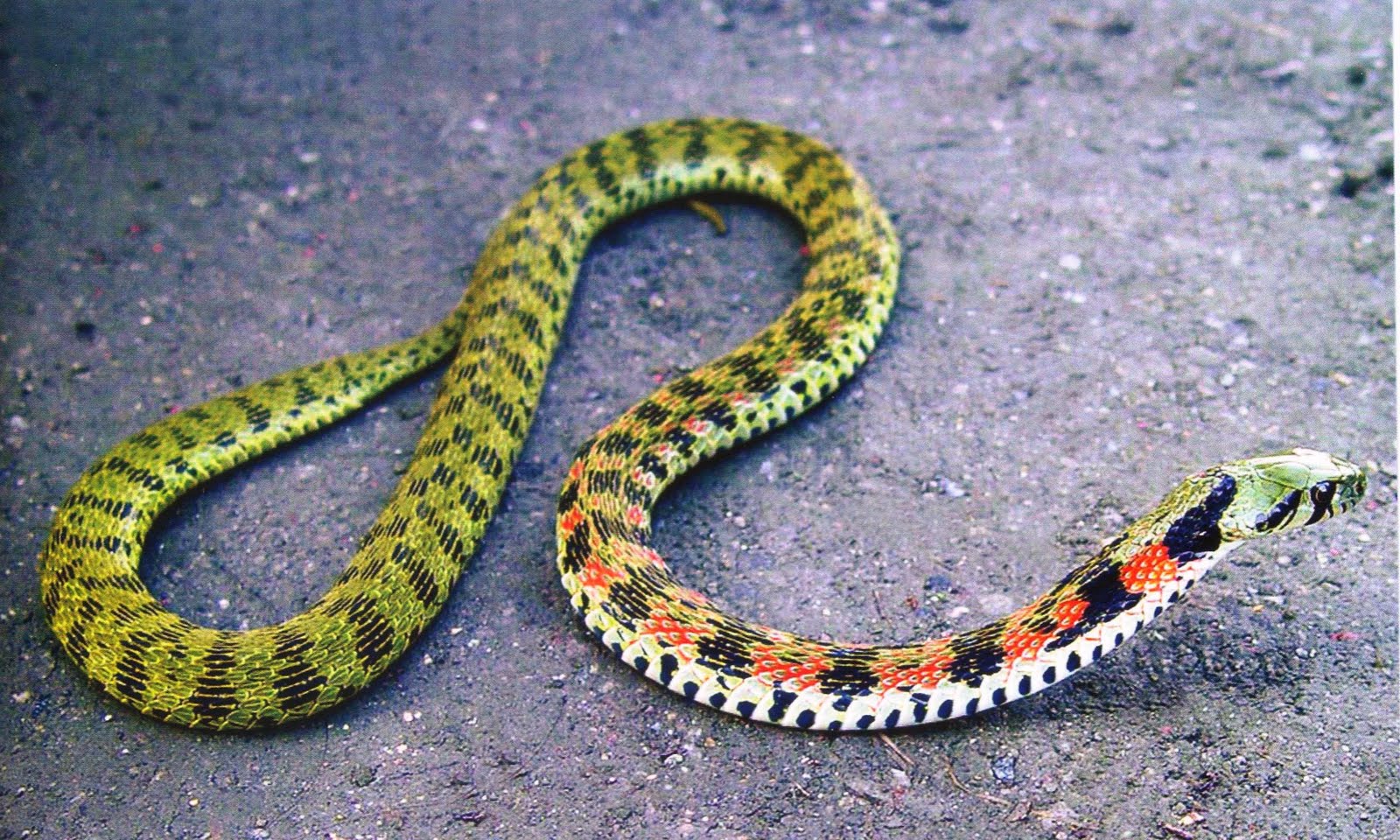
Tiger Keelback
Burrowing Asp
Nope, nope, nope. The Burrowing Asp is a particularly dangerous creature to small children thanks to how they are prone to hiding underground. Protruding fangs are poisonous enough to cause some serious damage were they to get into contact with your skin. This small snake is from Africa and typically eats rodents. They can also inject their poison deeper than any other snake.
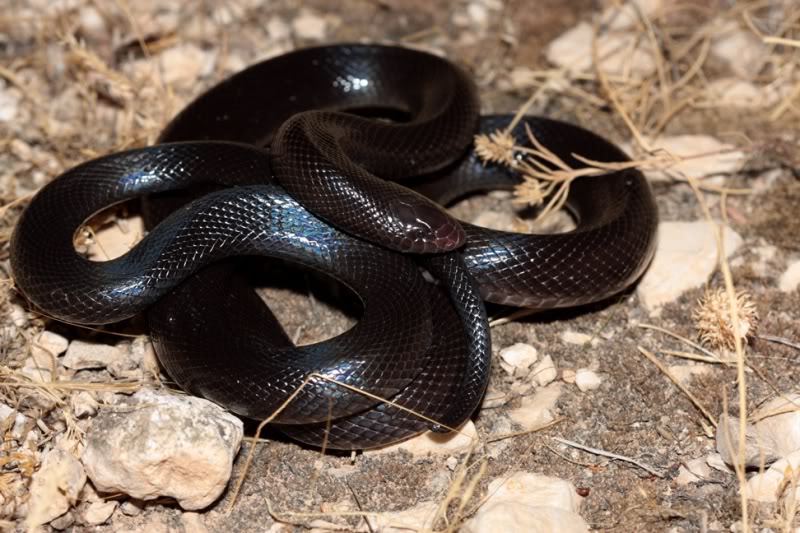
Burrowing Asp
Darevsky’s Vipers
If you ever find your way to Armenia or Turkey then you need to keep an eye out for Darevsky’s Viper. This is one of the most venomous snakes of the region and they can be found throughout the various mountainous regions. Research suggests that there are are only 500 or so of these snakes left alive.
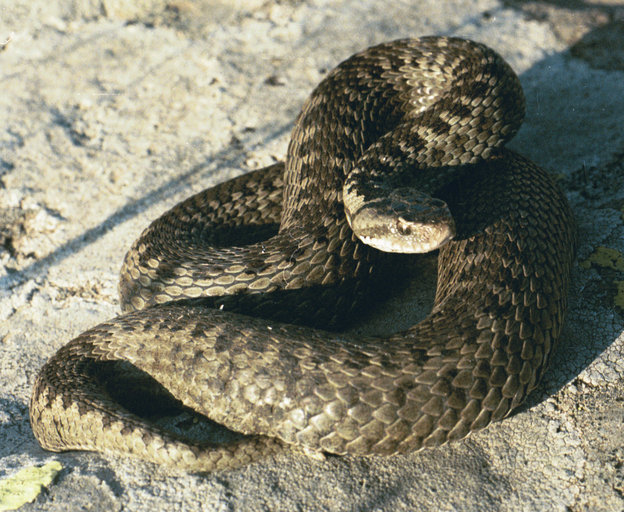
Darevsky’s Vipers
Dubois’ seasnake
Aipysurus duboisii, which is also known as the Dubois’ sea snake or even the reef shallows sea snake, (cause this species of venomous sea snake really needs three different names). They can found in these places, Papua New Guinea, New Caledonia and the northern, eastern and western coastal areas of Australia, as in the Coral Sea, Arafura Sea, Timor Sea and Indian Ocean. Before we forget, it is the most venomous sea snake, and one of the top three most venomous snakes in the world.
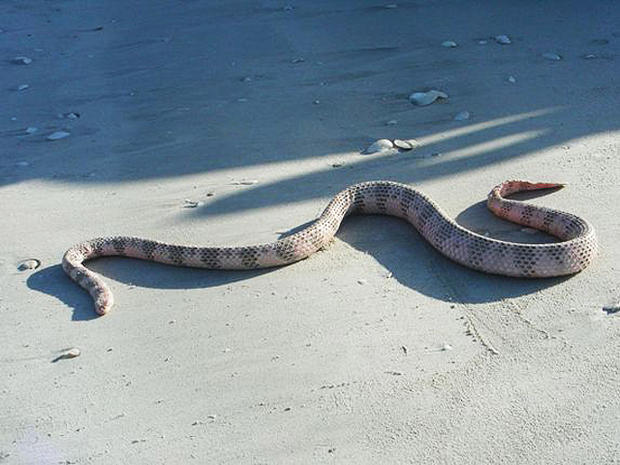
Dubois’ Sea Snake
Yellow bellied sea snake
Typically the Yellow bellied sea snake can be found in tropical oceanic waters and yes, this snake’s venom is highly potent. If it provides any comfort, they do have a rather distinctive bicolor pattern as they have a yellow underbelly and brown back. Basically, if you see one, get out of there.
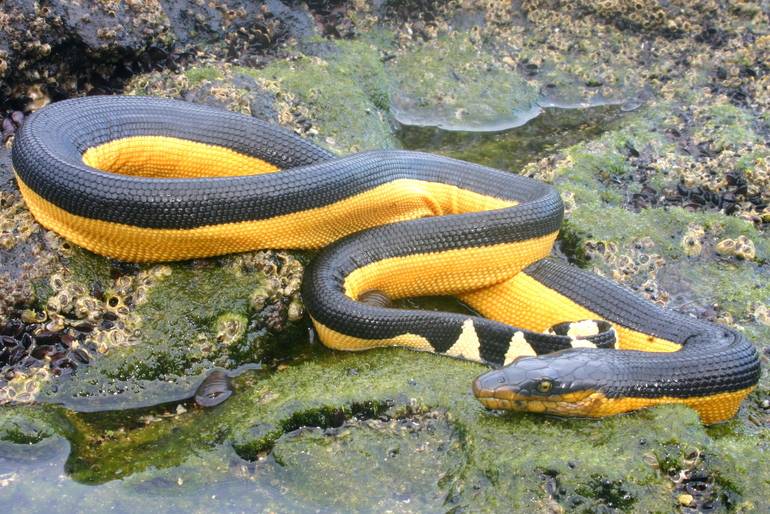
Yellow Bellied Sea Snake
Peron’s sea snake
Yesh, another sea snake, it’s almost like scientists are trying to tell us something! Found primarily in Gulf of Siam, Strait of Taiwan, Coral sea islands, and other places. And yes, it has extremely toxic venom in its bite. It is the only sea snake with spines on the head.
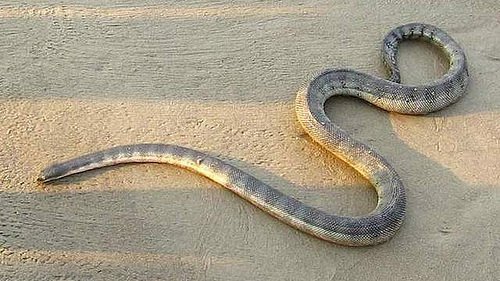
Peron’s Sea Snake
Coastal Taipan
The Coastal Taipan species is that of large, highly venomous snake belonging to the family Elapidae, ick. It is also a native to the coastal regions of northern and eastern Australia and the island of New Guinea. According to most toxicological studies, this species of snake is actually the sixth-most venomous land snake in the world.
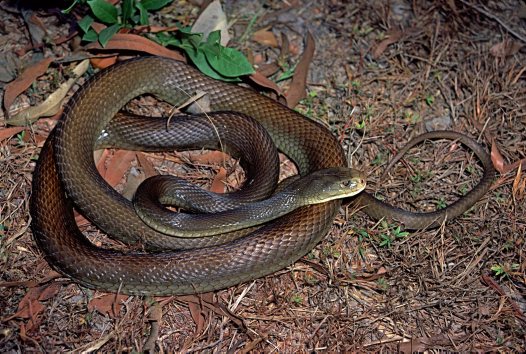
Coastal Taipan
Many-banded krait
Also known as the Taiwanese krait or the Chinese krait, this snake is a highly venomous species found in much of central and southern China and Southeast Asia. If bitten and untreated, the mortality rate varies among different studies, anywhere between 25 to 35% to 70–100%. Not that comforting, we know.
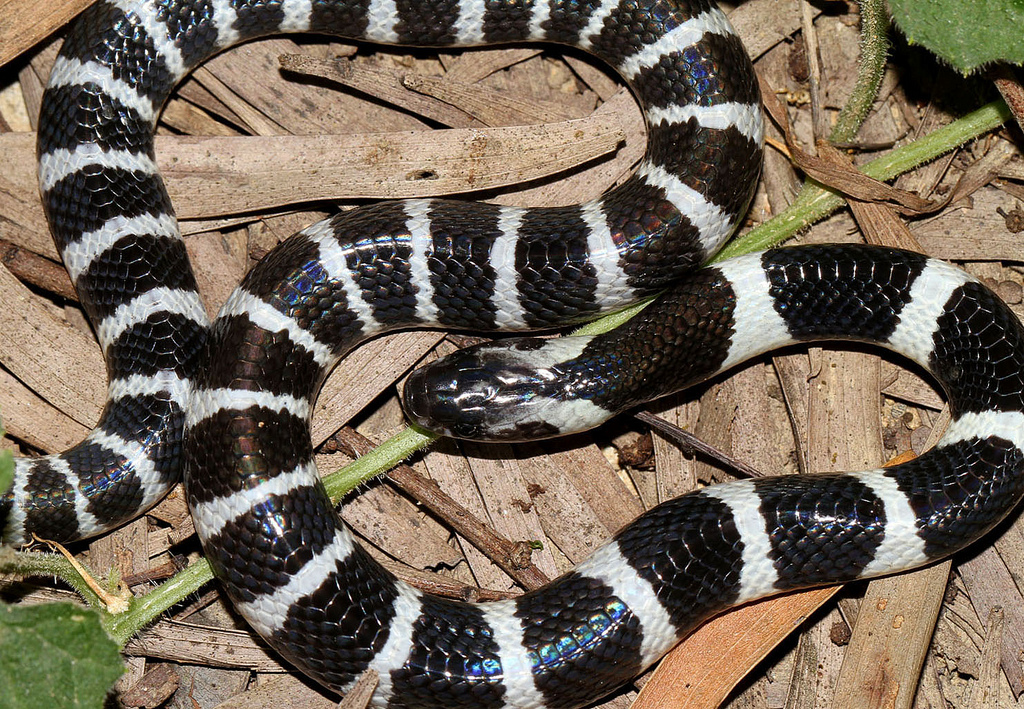
Many Banded Krait
Black-banded sea krait
The black-banded sea krait can mainly be found in most of the warm waters of the western Pacific Ocean. Their venom is actually ten times stronger than that of a cobra, making them extremely dangerous (!). Fortunately, this snake does not bite humans unless it feels threatened. Go figure.
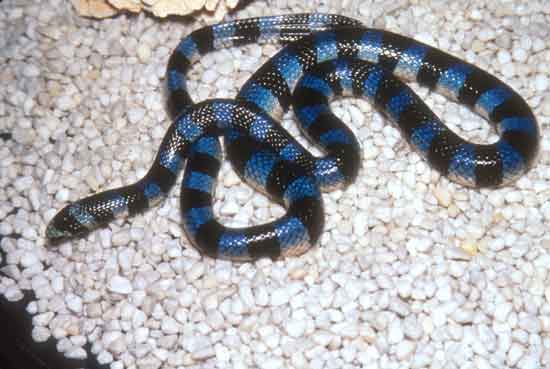
Black Banded Sea Krait
Beaked sea snake
Meet the Enhydrina schistosa, which is commonly known as the beaked sea snake, the hook-nosed sea snake, common sea snake, or the Valakadyn sea snake. Yesh, could it have more names? Yeah, probably. However, this realy isn’t a laughing matter as it is a highly venomous species of the sea snake common throughout the tropical Indo-Pacific. This snake is part of more than 50% of all bites caused by sea snakes, as well as the majority of envenomings and fatalities. Yikes.
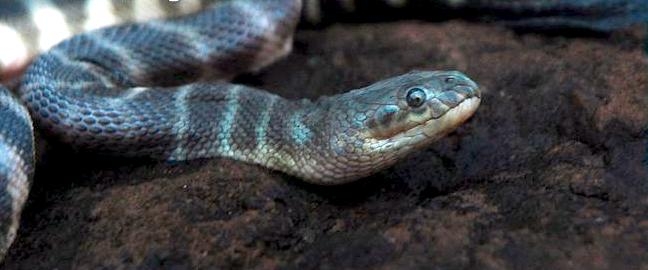
Beaked Sea Snake
Forest cobra
The Forest Cobra is also known as the black cobra or the black and white-lipped cobra. This snake is native to Africa, mostly in the central and western parts of the continent. While bites to humans are actually far less common than from other African, a bite from this species is a life-threatening emergency.
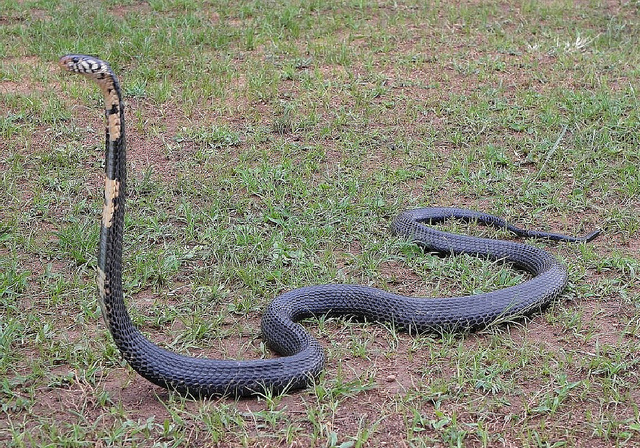
Forest Cobra
Caspian cobra
Ahh, yes, the Caspian cobra is also referred to as the Central Asian cobra, Oxus cobra or Russian cobra, and can be found in Central Asia. This species is generally aggressive and also bad-tempered while they will avoid humans as much as they possibly can, they will become fiercely aggressive when threatened or cornered. It is also the most venomous species of the cobra in the world, slightly ahead of the Philippine cobra, so just stay away. Far, far away.
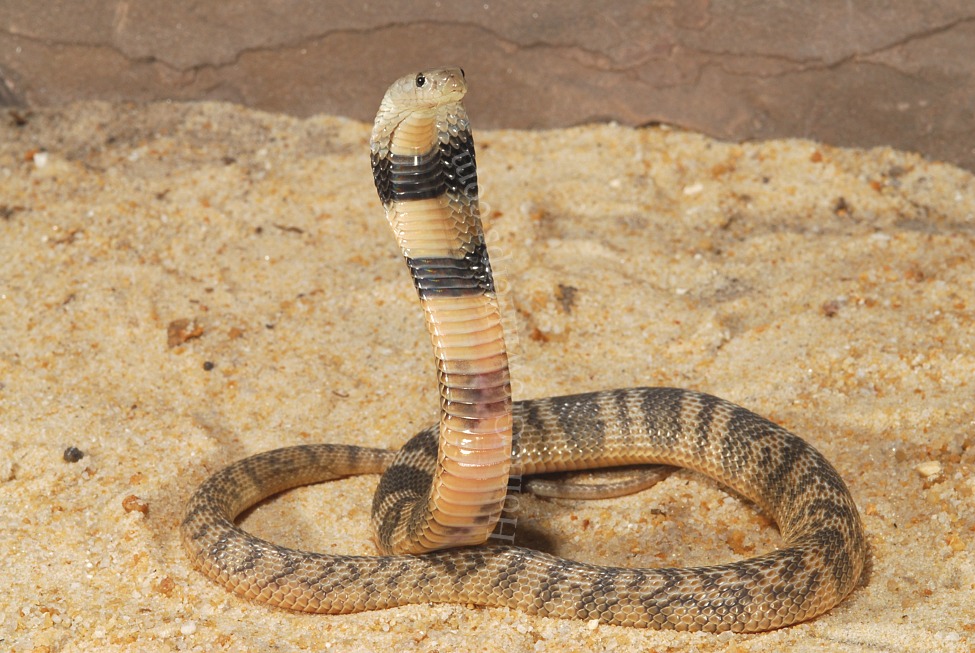
Caspian Cobra
Cape cobra
The Cape cobra is regarded as one of the most dangerous species of cobra found in all of Africa, because of its very, very potent venom and that it is typically found around/in houses. The mortality rate is incredibly high and it normally takes from an hour (in severe cases) to ten hours (or more) and often leads to respiratory failure, due to the onset of paralysis, but at least there is an antivenom.
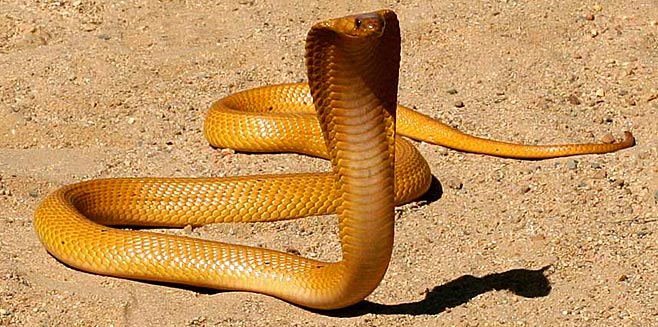
Cape Cobra
Terciopelo
Meet the Bothrops asper or the terciopelo, which is a rather venomous pit viper species that hails from southern Mexico to northern South America. Yay? It’s often referred to as the “ultimate pit viper”, (so not yay) these snakes are usually found in a wide range of lowland habitats, often near human habitations. Most believe that because of its proximity to human habitations, that’s probably why it is considered more dangerous to humans than others. Makes sense.
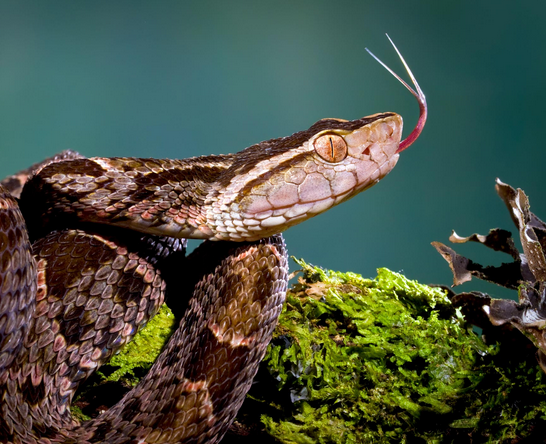
Terciopelo
Gaboon viper
The Gaboon viper is found in the rainforests and savannas of sub-Saharan Africa. Of course like all vipers, it is venomous. Here’s the catch though, it is not only the largest member of the genus group, but is is also the world’s heaviest viperid. Did we mention it has the longest fangs? Up to 2 inches in length (5 cm). Oh yeah, it also has highest venom yield of any snake. This is one scary, uber dangerous snake in case you couldn’t tell.
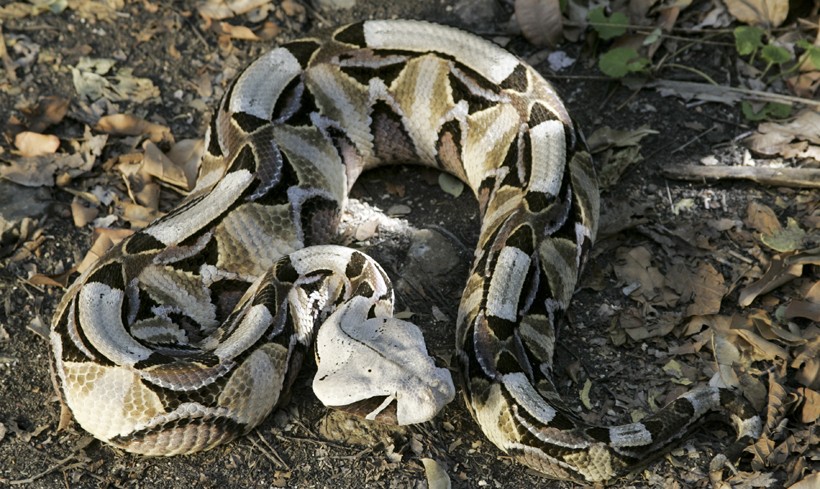
Gaboon Viper
Common death adder
This species of death adder is native to Australia, and it is one of the most venomous land snakes in Australia plus globally. The venom contains a highly toxic neurotoxin which causes paralysis or even death, not good. It can deliver the fastest strike among all other venomous snakes recorded in Australia, additionally human death can occur within six hours after bitten.
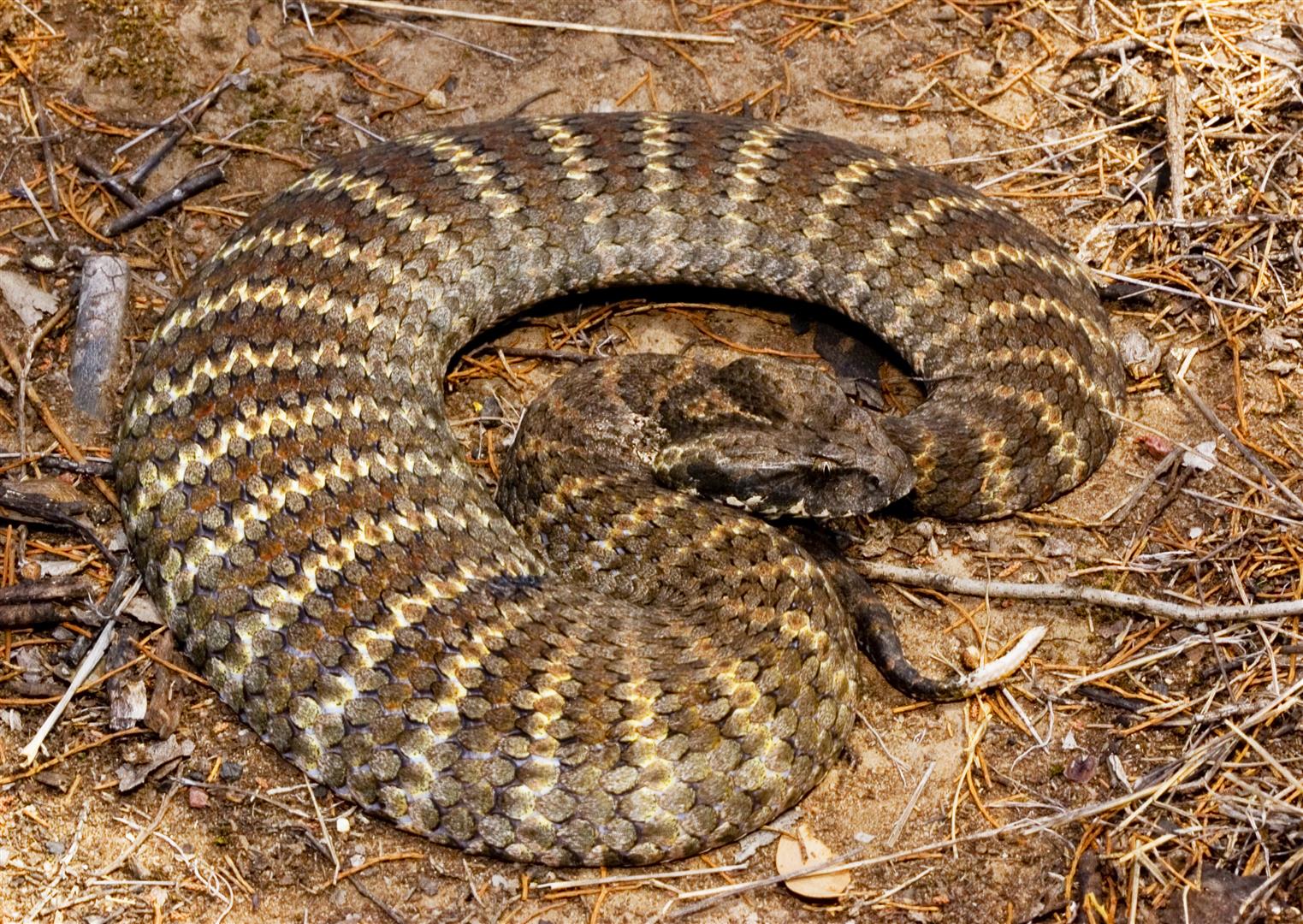
Common Death Adder
Green mambas
There are three kinds of green mambas in the world, as if one wasn’t enough. Green mambas (Western, Eastern, and Jameson’s) are all highly venomous snakes that are also highly aggressive and unpredictable in disposition, so not what you want in a snake. All three species are highly arboreal, alert, extremely quick, and agile. Their venom is much more rapid-acting and the dendrotoxins are more devastating to the central nervous system, causing more severe neurotoxicity quickly.
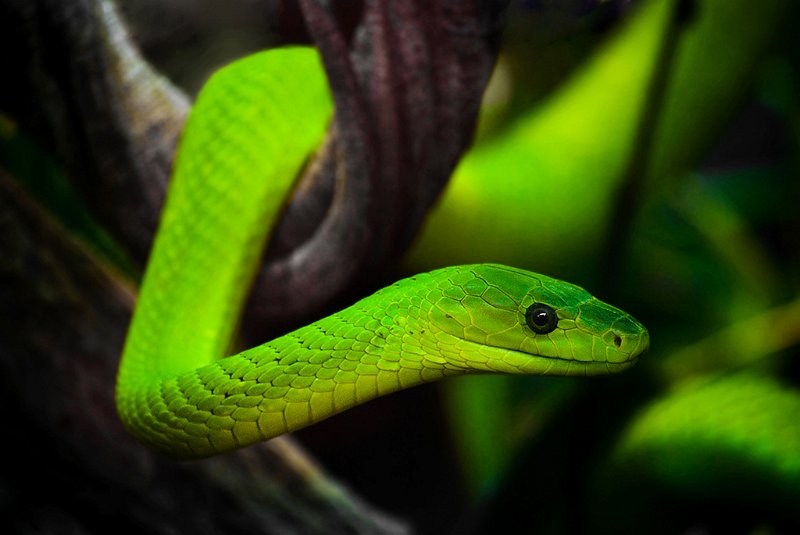
Green Mambas
Jararaca
Meet the Jararaca, the best-known venomous snake in wealthy and heavily populated areas of southeastern Brazil. Between 1902 and 1945, this snake was responsible for 52% (3,446 cases) of snakebites, with a 0.7% mortality rate (25 deaths). Their venom is slightly more toxic than that of the terciopelo or fer-de-lance so stay clear.
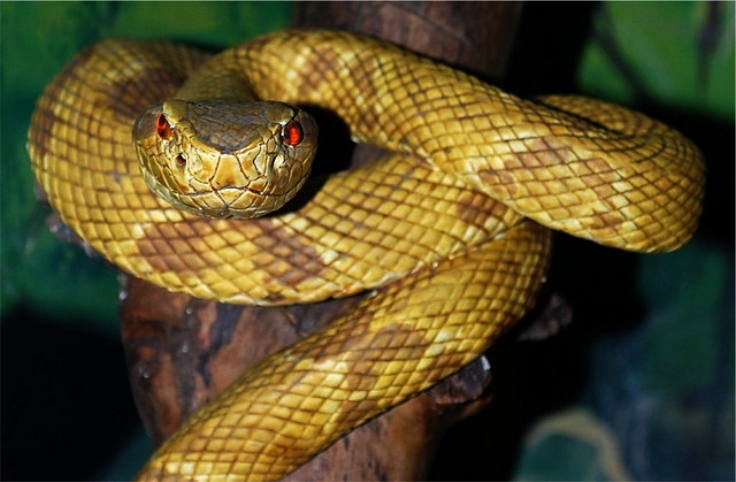
Jararaca
South American bushmaster
South American bushmaster snakes are the longest venomous snake in the Western Hemisphere, as are they the longest pit viper in the world. Native to parts of South America, especially the equatorial forests east of the Andes, so scratch that off the bucket list. To make matters worse, they are large, fast and have a reputation for being aggressive when cornered.
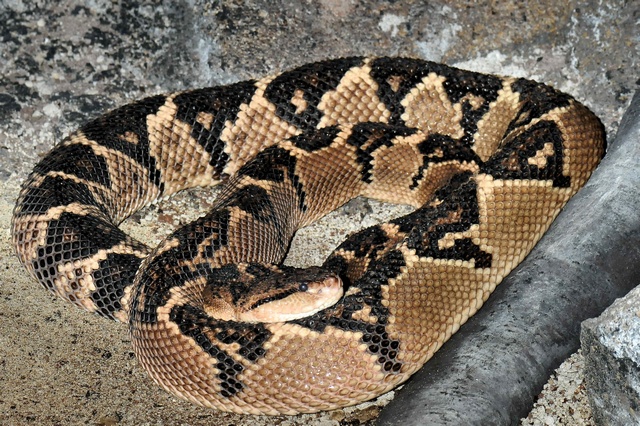
South American Bushmaster
Sharp-nosed pit viper
The Sharp-nosed pit viper or hundred pacer is another Asian species of pitviper that is medically important. This species is considered especially dangerous, and fatalities are not that unusual. According to the U.S. Armed Forces Pest Management Board, the venom is a potent hemotoxin that is strongly hemorrhagic. Symptoms of a bite include severe local pain and bleeding that may begin almost immediately. This is then followed by considerable swelling, blistering, necrosis, and ulceration. Oy, not good. The envenomation rate is up to 80% and the untreated mortality rate is quite low (1-10%). The antivenom is produced in China and Taiwan.
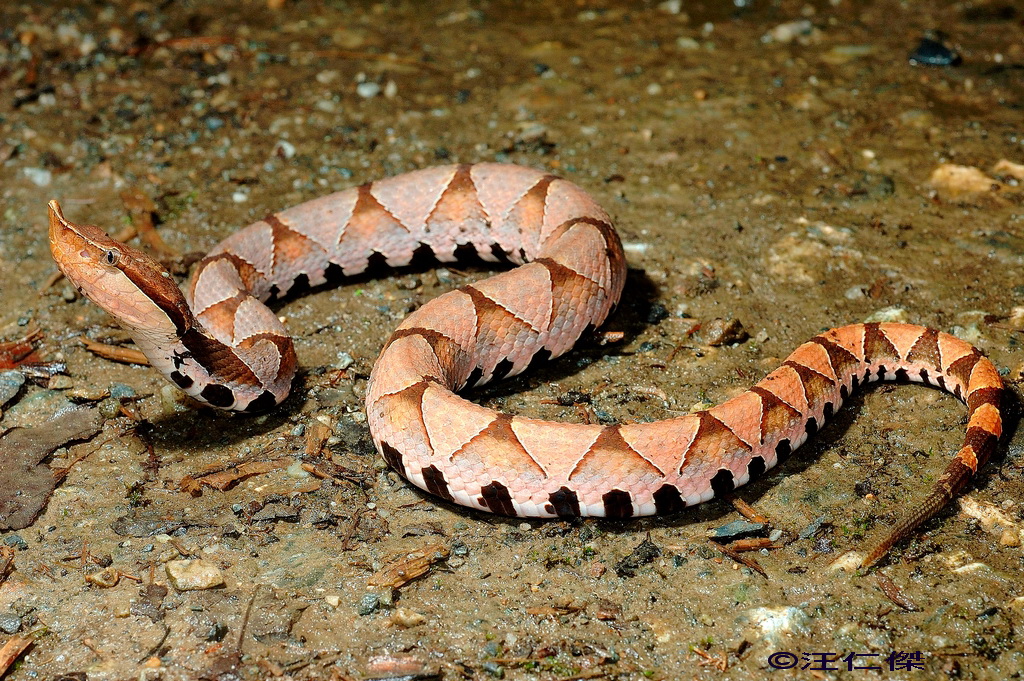
Sharp Nosed Pit Viper
Malayan pit viper
This dangerous snake is up next and it is an Asian species of pitviper that has a reputation of being ill-tempered and quick to strike in defense. Not a good combination for us. You’ll find that one of the main causes of the snakebite envenoming is in Southeast Asia so I guess that’s off the list.
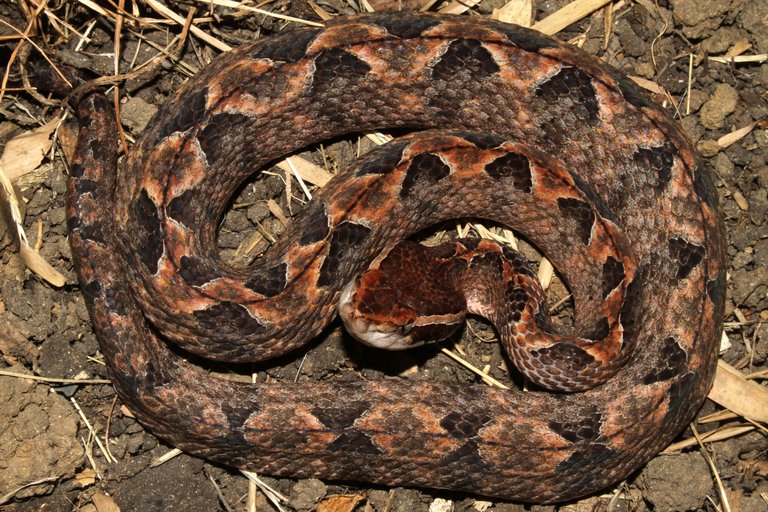
Malayan Pit Viper
Mojave rattlesnake
Yup, the mojave rattlesnake is a dangerous fella and although they have a reputation for being aggressive towards people, such behavior is not actually described in scientific literature. Like other rattlesnakes, they will defend themselves vigorously when disturbed. Noted. Also, their venom is considered to be one of the most debilitating and potentially deadly of all of the North American snakes, however chances for survival are very good if medical attention is sought as soon as possible after a bite.
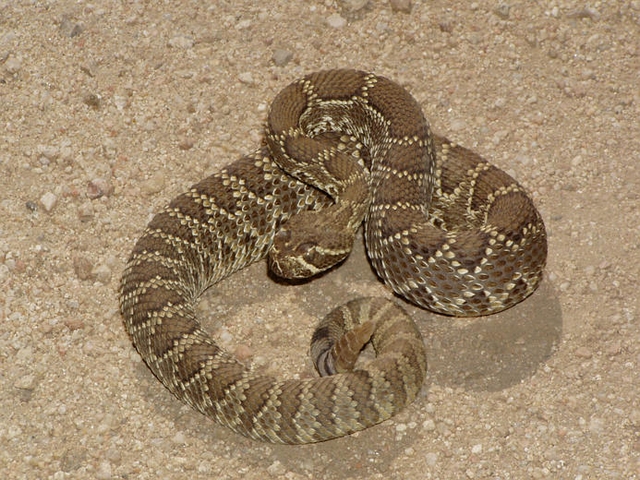
Mojave Rattlesnake
Cascabel
The Neotropical rattlesnake or Cascabel (Crotalus durissus) is a medically important species because of the venom toxicity and human fatalities it is responsible for. I don’t care how many names it has, this is one dangerous snake I never want to encounter.
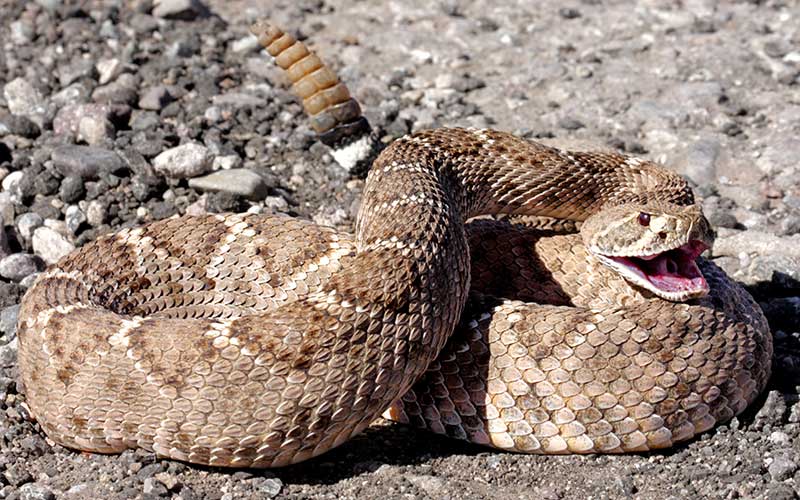
Cascabel
Tiger rattlesnake
The Tiger rattlesnake (Crotalus tigris) has a low venom yield but is still considered to have the most toxic of all rattlesnake venoms, and also the highest venom toxicity of all snakes in the Western Hemisphere. Although they are reluctant to bite, tiger rattlensakes are known to be rather aggressive as they have a tendency to stand their ground and aggressively defend themselves, they do pose a serious threat to humans.
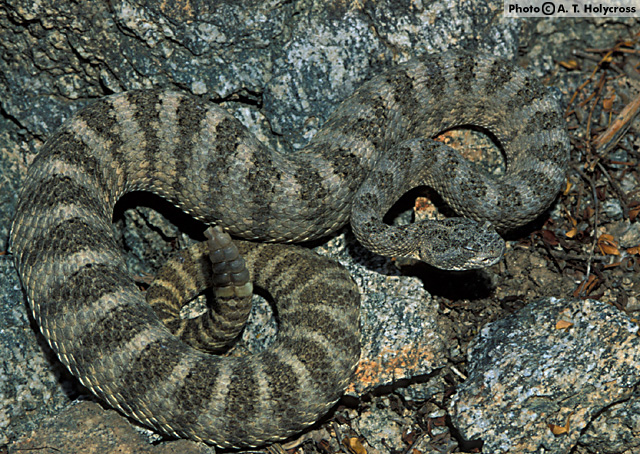
Tiger Rattlesnake
Western Brown snake
The Western brown snake, or Pseudonaja nuchalis, is a highly venomous species of brown snake which is common in Western Australia. Its venom does have powerful neurotoxins, nephrotoxins and a procoagulant. Their bite is typically painless and difficult to see due to their small fangs. Some symptoms of their bite are headache, nausea/vomiting, abdominal pain, severe coagulopathy and sometimes, kidney damage.
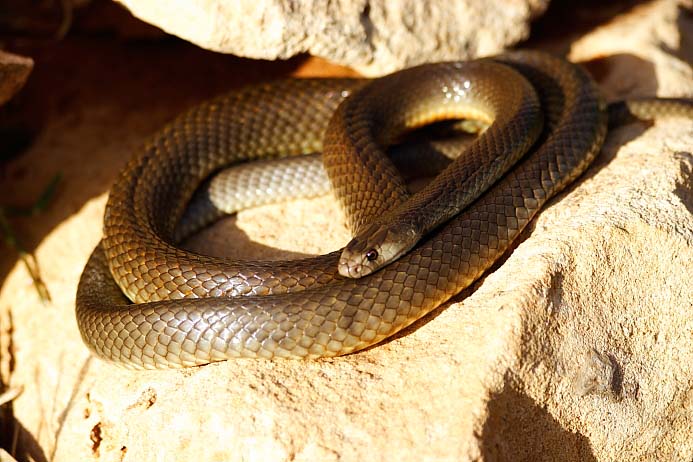
Western Brown Snake
Dugite
When talking about the Dugite, or Pseudonaja affinis, it is imortant to note that it is a highly venomous Australian brown snake species. The venom of this particular species contains highly potent presynaptic and postsynaptic neurotoxins and procoagulants. So stay clear!
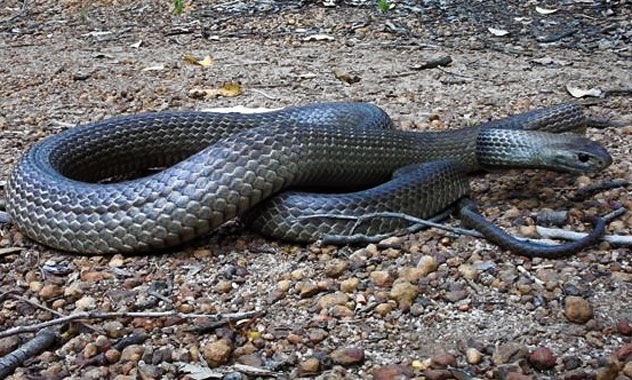
Dugite
Red-bellied black snake
The Red-bellied black snake is up next and it is a venomous species native to Australia. The venom of this snake consists of myotoxins, coagulants and also has haemolytic and cytotoxic properties. Bites suffered from a red-bellied black snake are rarely life-threatening as it usually chooses to inject little venom toxin, but you are still in need of immediate medical attention.
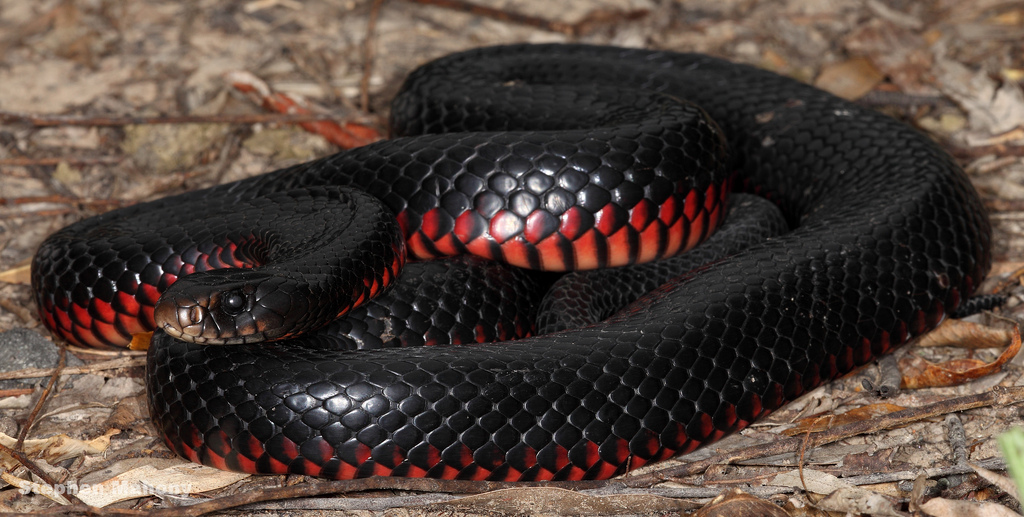
Red Bellied Black Snake
King brown snake or Mulga snake
Listen up, the Australian King brown snake or Mulga snake is the second longest species of venomous snake in Australia! The venom of this particular snake is actually relatively weak compared to many other Australian species. However, these snakes can deliver large amounts of venom when they bite, which compensates for the lower venom potency. Note that they are a moderately common cause of snakebites and uncommonly cause snakebite deaths in Australia at present.
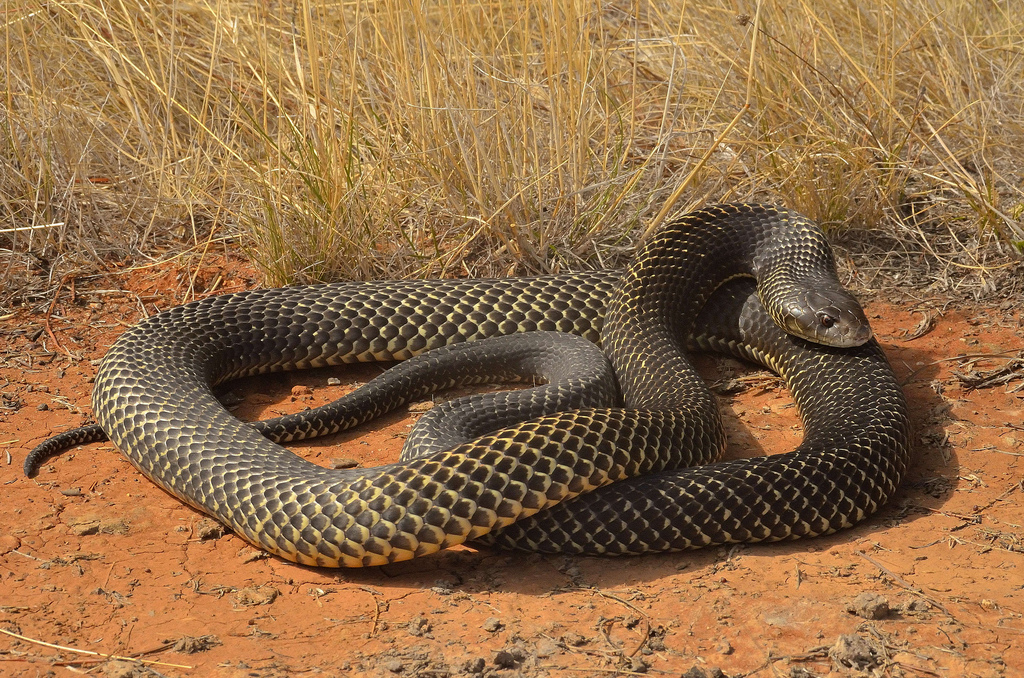
King Brown Snake Or Mulga Snake
Rhinoceros viper
The Rhinoceros viper, or Bitis nasicornis, is a large species of viper similar to the Gaboon viper, but not as venomous, smaller and with a less dangerous bite. It’s important to note that they are slow moving, but are capable of striking quickly, forwards or sideways, without coiling first or giving a warning. Holding them by the tail is not safe at all (as if anyone would do that!); as it is somewhat prehensile, they can use it to fling themselves upwards and strike. They have sometimes been described as quite calm and not as bad-tempered as the Puff adder. When approached though, they will usually reveal their presence by hissing, which is said to be the loudest hiss of any African snake that it sounds almost a shriek.
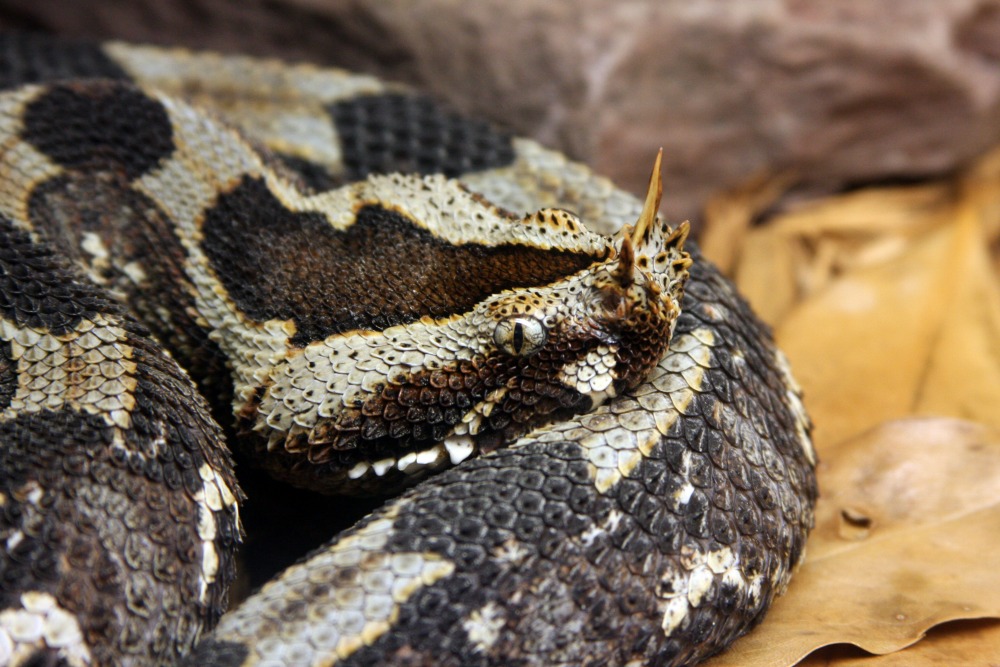
Rhinoceros Viper
Spitting cobras
With a name like spitting cobras, you don’t need to think too hard just why this species makes the list. Spitting cobras are generally found in Africa and Asia. These cobras also have the ability to eject venom from their fangs when they are defending themselves against predators. Now the sprayed venom is actually harmless to intact skin, however, it can cause permanent blindness if one is sprayed in the eye and leaves it untreated.
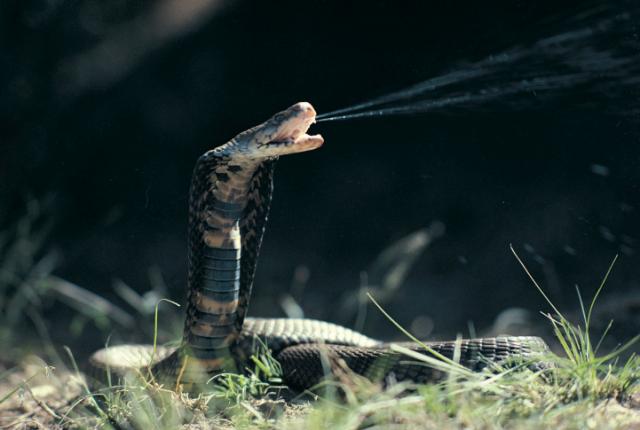
Spitting Cobras
Samar cobra
The Samar cobra is a highly venomous species of the spitting cobra found in the southern islands of the Philippines. Now while it is in the species of the spitting cobra, this snake rarely spits its venom, because that’s such a comfort. It is, howver, considered an extremely aggressive snake that strikes with very little provocation. Oh, that’s somehow not better.
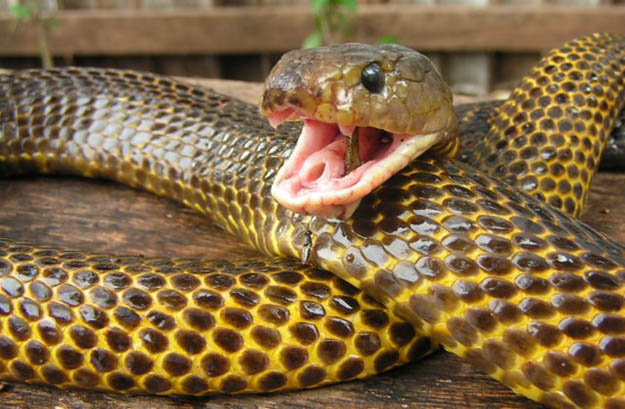
Samar Cobra
Rinkhals
The Rinkhals is a relative of true cobras and is considered one of the true spitting cobras. Peachy? No way. Additionally, the venom is less viscous than that of other African elapids, naturally, as it has thinner fluid that is naturally easier to spit. With that being said though, the venom of the rinkhals is produced in copious amounts so be careful.
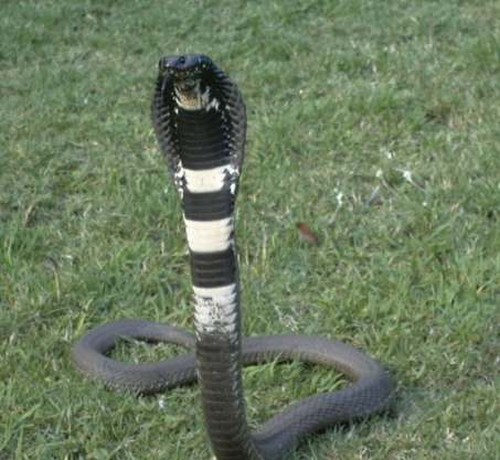
Rinkhals
Indochinese spitting cobra
Oh goodie, another spitting cobra. The Indochinese spitting cobras uses their venom for self-defense with quite little provocation, and as the name implies, it is capable of spitting venom, often directly at the face and eyes of the animal or human.
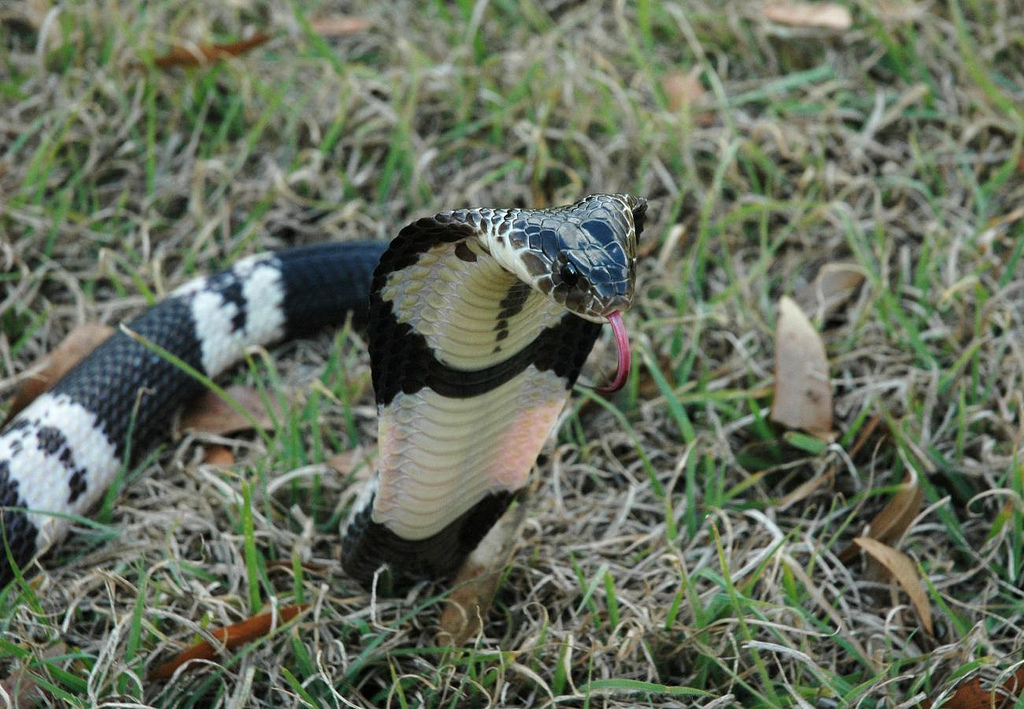
Indochinese Spitting Cobra
Puff adder
Oh goody, the Puff adder, or the Bitis arietans, is responsible for the most fatalities over any other African snake. This is mainly due to the fact that it has wide distribution, a large size, potent venom produced in really large amounts, long fangs, and the habit of basking by footpaths while sitting quietly when it is approached. Ugh, sounds horrible!
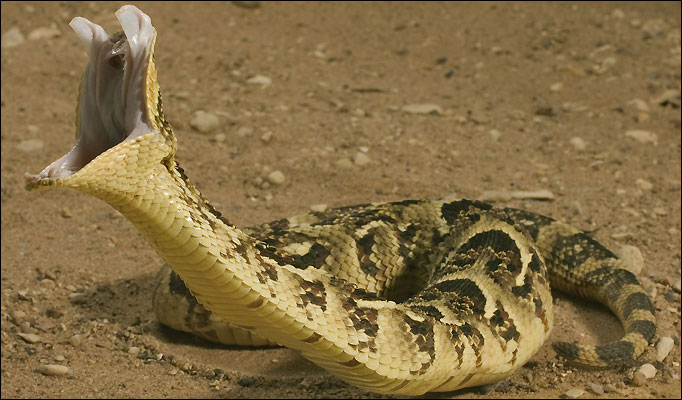
Puff Adder
Black-necked spitting cobra
Also known as the Naja nigricollis and it is found mainly in Sub-Saharan Africa. This particular bunch has medically significant venom, although the mortality rate of untreated bites to humans is relatively low (although that doesn’t really fill me with a lot of warm, fuzzy feelings). Again, as with the other spitting cobras, the Black-necked spitting cobra also releases a venomous poison most dangerous to the skin and yes.
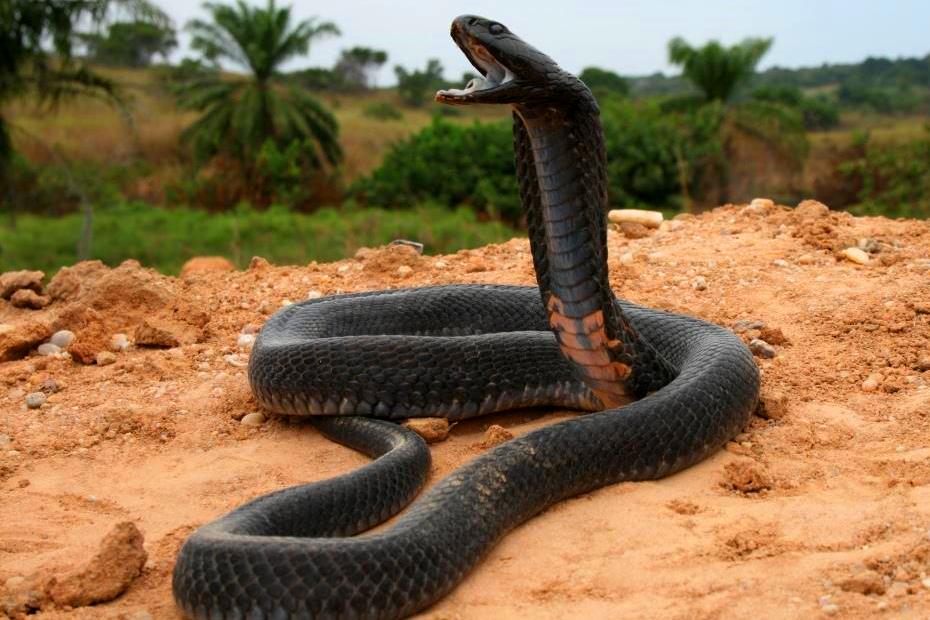
Black Necked Spitting Cobra
Black desert cobra
Yup, you guessed it, the Black desert cobra is a highly venomous snake that is found in the Middle East. The venom it produces is a very strong neurotoxic and also has mild hemotoxic factors. If bite, you will experience local pain, swelling, general weakness, headache, fever, and vomiting. Now while this is not usually an aggressive snake, it will strike and hiss loudly if is provoked.
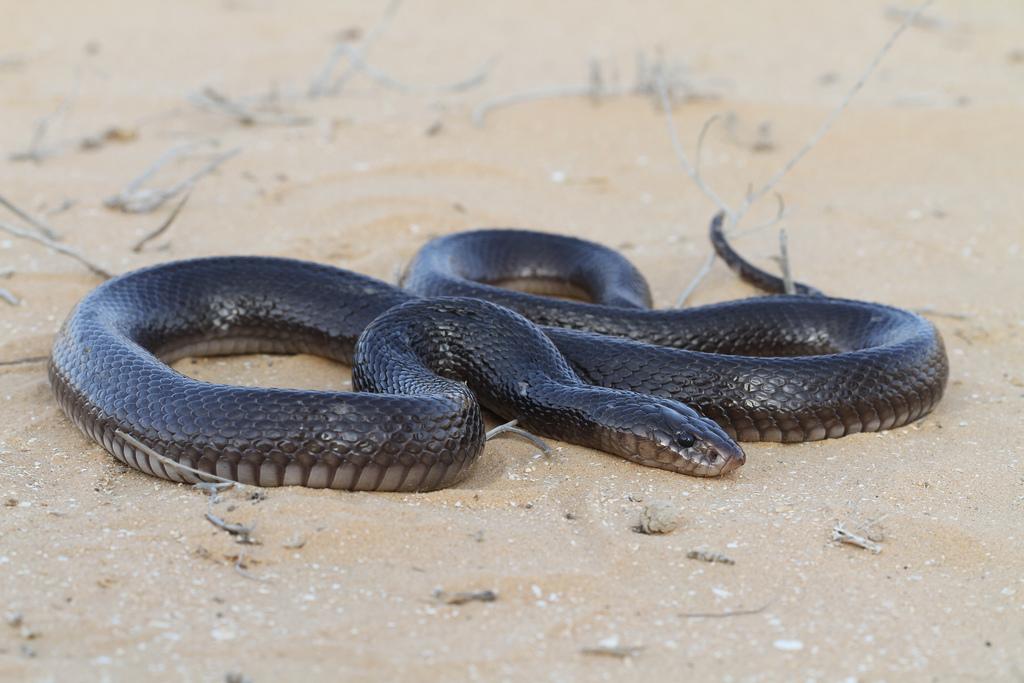
Black Desert Cobra
Mozambique spitting cobra
Udh, another medically important African spitting cobra, known as the Mozambique spitting cobra or Naja mossambica. This species is considered to be quite irritable and highly aggressive. Great news, right? Nope. Get this, the Mozambique spitting cobra is responsible for a significant amount of bites in its range, but most are not actually fatal. That’s an upside I suppose.
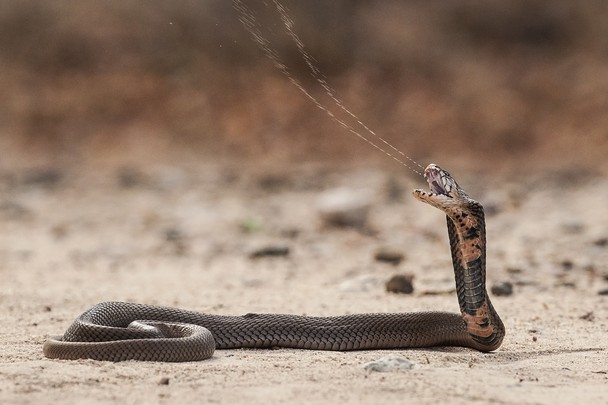
Mozambique Spitting Cobra
Mali cobra
If you’re in the western African region, then you’re aware of the Mali cobra which is a venomous species of the spitting cobra. In fact, this particular spitting cobra is one of the most common causes of snakebites in Senegal.
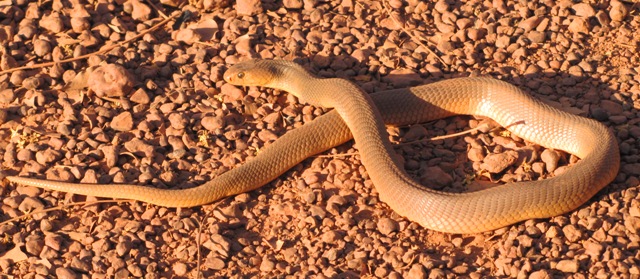
Mali cobra – Naja Katiensis
Water cobras
Water cobras are found in central and western Africa, and they are the most venomous cobra species (Naja) in the world. Gross. It has a very poisonous venom for which there is no antivenom currently.
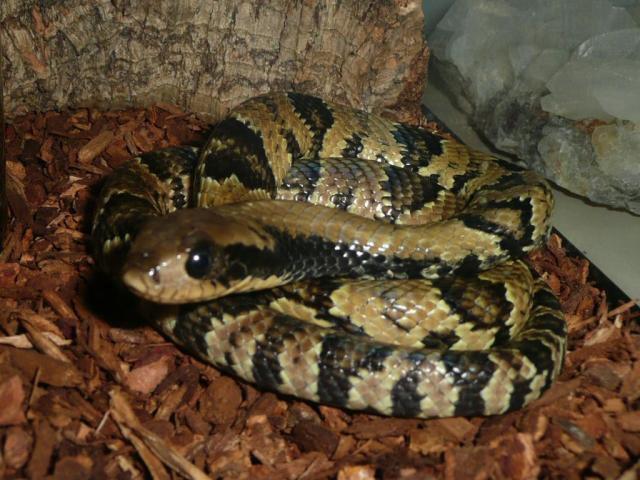
Water Cobras







